GARNET & BLACK
ENDING THE SITGMA AROUND MENSTRUATION. WHY YOU SHOULDN’T BE EMBARASSED ABOUT AUNT FLO
BOYS WILL NEVER KNOW CELEBRATING THE JOYS OF FEMININITY
COMFORT FOODS
JUST LIKE MOM USED TO MAKE
REDEFINING YOUTH
HOW A TV SHOW CHANGED THE WAY WE THINK ABOUT GROWING UP
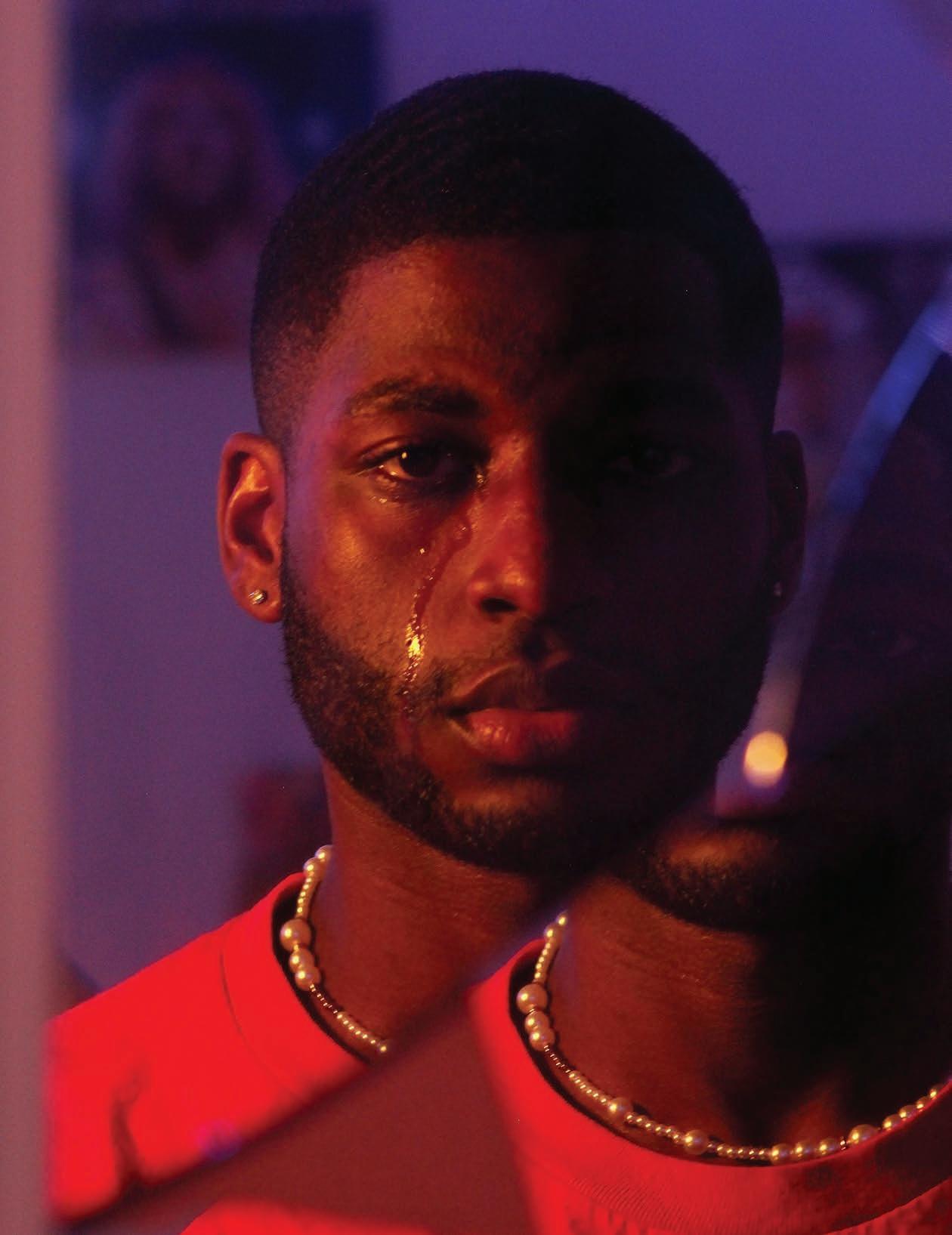
SPRING 2022 STUDENT
MAGAZING AT THE UNIVERSITY OF SOUTH CAROLINA
2
3
STUDENT MAGAZINE OF THE UNIVERSITY OF SOUTH CAROLINA
EDITOR-IN-CHIEF
CREATIVE DIRECTOR
MANAGING EDITOR ENGAGEMENT DIRECTOR

ARTICLE EDITORS
WRITERS
ALIZAJANE HICKS
SHAIRA NIXON
KEVIN CONNAUGHTON
CLARA BERGESON
Kendall Vorhis
Ali Tabassum
Adaija Darby
Ahalya Muraleedharan
Alex Blumenthal
Alex Ruz
Allyson Reavis
Brianna Rao
Brittany Myers
Casey McLean
Chelsea Watson
Claire Ellis
Ethney Dosenback
Emalee Goode
Kelly Hughes
Max Bowman
Reava Bali
Ridha Fatima
Sabrina Artusa
COPY CHIEF
COPY EDITORS
Addison Hinkle
Abbie Mott
Abigail Billings
Ariel Meriwether
Kayla DeToma
Lexi Anunson
Lexi Gastelu
Lily Ehemann
Meaghan Knowles
Reagan Green
4
SOCIAL MEDIA DIRECTOR
SOCIAL MEDIA MANAGERS
Natalie Hunt
Anna Ottinger
Audrey Leach
Bree Kordes
Jazlyn Gallishaw
MULTIMEDIA DIRECTOR
MULTIMEDIA MANAGERS
Maryah Nasir
Faith Fulmer
Jalen Miller
PUBLIC RELATIONS DIRECTOR
PUBLIC RELATIONS MANAGERS
Lily Vincola
Awani Bildikar
Carley Schneller
Morgan Pickney
STYLE DIRECTOR STYLISTS
Parker Blackburn
Alisha De Jesus
Angel Sortijas
Benji Early
Caroline Callicutt
Ciara Laney
Isha Singh
Jase Leonard
Kaitlyn Howard
Lauren Cole
Lily Miller
Mia McManus
Raynee Quillen
Toni Deloach
ART DIRECTOR DESIGNERS
Julia Dunne
Casey Hall
Cecilia Callozzo
Jensen Bernard
Lily Ferguson
Maria DeSimone
Megan Wooters
Melissa Borgerding
Savannah Nagy
5
PHOTO EDITORS
PHOTOGRAPHERS
Aaron Falls
Chloe Caudill
Dev Patel
Dejon Johnson
Frederick Gause
Henry Travis
Jackson Tucker
Jacob Garcia Zambrano
Jaylen Anderson
Laura Lucivero
Lexi Croft
Sydney Bonaparte
Sydney Dunlap
Zane Heinlein
DIRECTOR OF STUDENT MEDIA
ASSISTANT DIRECTOR OF STUDENT MEDIA
ART DIRECTOR OF STUDENT MEDIA FACULTY ADVISOR
Sarah Scarborough
Sydney Patterson
Krista Larson
Scott Farrand
Advertising: (803) 777-3018
To contact G&B, email sagandbe@mailbox.sc.edu or visit www.gandbmagazine.com. Garnet & Black Magazine is printed twice a year by students of the University of South Carolina and is distributed for free to members of the university community. All editors can be reached via email on our website. The office is located in Russell House University Union room 339.
6
“Comfort is not about your surroundings, it’s about the people who you are surrounded by. But, being in a fluffy robe with a cat on your lap and a hot matcha in your hand also helps!”
- Caroline
Callicutt
(Style)
“Comfortability means complacency. In order to grow, we should seek out the uncomfortable, discuss the uncomfortable, do the uncomfortable. Comfort is restrictive. In order to see the change we want in the world, discomfort must be sought after.”
“To me, comfort is being ok with the unknown and finding pleasure and beauty in the moment. It’s learning from the pain rather than fighting it. Comfort is so important to me because to live is so startling... It leaves me appreciative of anything that comes my way.”
-
Natalie Hunt
(Social Media Head)
G“Being comfortable means to be able to be comfortable in your own skin. When you realize you’ve finally achieved comfortability is the day you can look at yourself in the mirror and see you are everything you’ve ever needed in this world. Beautiful you.”
- Alex Ruz (Articles)
B &
Staff Quotes
Q: What does comfortability mean to you?
BY G&B STAFF • DESIGN BY CASEY HALL
- Henry Travis (Photo)
“Comfortability means that you are able to be the truest form of yourself regardless of everything around you. It’s not a specific place, although there are specific places that I find more comfort in than others, but rather a feeling that is shared among people with varying experiences.”
-
Melissa Borgerding
(Design)
“Comfortability to me is finding peace within yourself. There will always be difficult moments in life but there is power within all of us to persevere and be resilient. Find comfort in the fact that you are a lot stronger than you think.”
- Brittnay Myers (Articles)
“Comfort is knowing, no matter what, you have a soft place to land. At night, it’s in my bed, next to my cat. In times of distress, it’s my sunroom, with an open journal and a deck of cards.”
- Clara Bergeson (Engagement Director)
7
 Cover photo by Laura Lucivero
Cover design by Shaira Nixon
Cover photo by Laura Lucivero
Cover design by Shaira Nixon
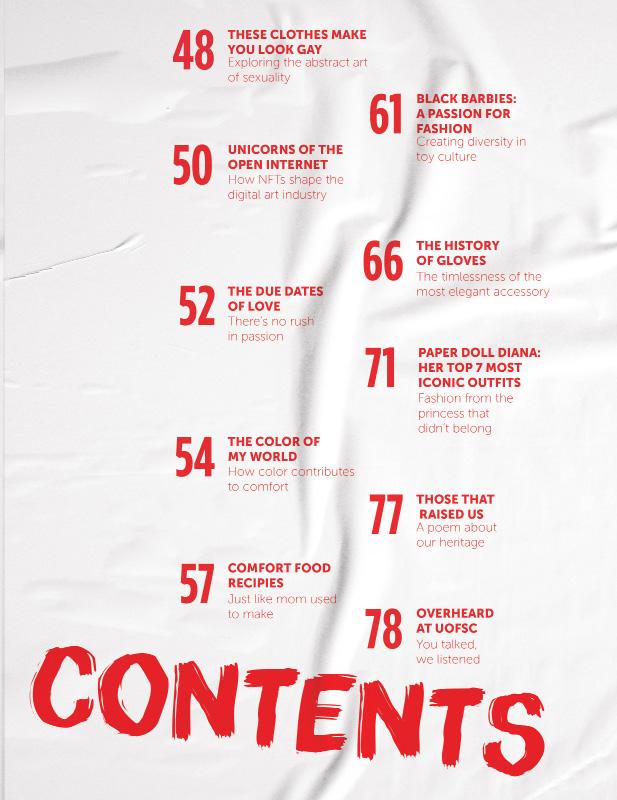
10
Letter From
As a girlboss/college student/graphic designer, I spend many hours of my day looking at a screen. Oftentimes, I will have my work computer, personal laptop, phone and a TV for background noise all going at the same time. Even right at this very moment writing this letter to you, I am looking at a screen.
You’re not though! If you are reading this, that means you are holding a good ole’ fashion paper magazine in your hands. No blue light, no noise, just some ink on a page. Isn’t that beautiful? Pull it to your face. Take a whiff. Come on, no one’s looking, just trust me. That’s the smell of fresh ink. You don’t get that from your phone screen.
Since I do spend so much of my productive time working on a screen, I set a goal for myself this semester to spend the majority of my leisure time acoustically – no screen. Which is a great goal, and I’ve had so much fun these past few months. However, one thing that I didn’t think about prior to setting this goal was just how much of my entertainment is digital. Watching movies, watching TV, TikTok, games on my phone, even making art for me is done via computer.
So, I began searching for something fun to do in the evenings that didn’t involve technology, and that’s when it hit me: puzzles.
Now, I know you must think it’s lame, but there is so much peace in putting together a puzzle. (Get it, peace). It’s the perfect activity. You can do them alone. You can do them with friends. (My poor friends have sat through many hours of me screaming over finding the perfect piece that I have been
looking for.) You can get them in different sizes and difficulty. Then when you’re done you can frame them and make super cool wall art.
As a Virgo, I like to do the edges first. My chaotic counterparts that I call friends just like to dive in blind. You can probably imagine what our conversations sound like.
However, I didn’t stop at puzzles. I’ve been watching a lot of “Friends”. It’s cheugy I know, but one day while doing my silly little homework tasks with my silly little TV show in the background, I noticed the friends were playing cards. Cards! What a great idea. Do you know how much 1 (one) deck of cards cost? Two dollars. Do you know how many different games you can play with just one deck of cards? Neither did I. After some research (aka reading a mommy blog), I’ve found that there are at LEAST 107 different card games for a standard deck of cards. So that’s two dollars divided by 107
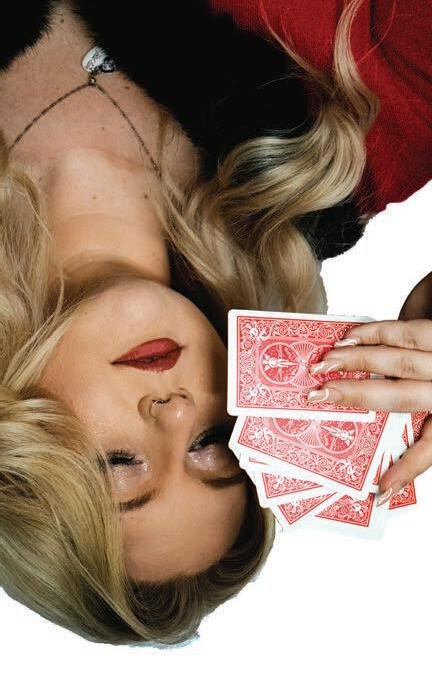
way down. I had less bad dreams. It helped me change the way I view people and time. I spend so much time online. I want to do better things with my time.
I started looking at myself differently. I had a thought where I felt like I didn’t need to actually remember my memories, because I have a camera that will remember them for me. It made me feel physically ill.
I don’t think technology is evil. I think it helps humanity in lots of ways. If I didn’t have technology, making this magazine would be a whole hell of a lot harder. I do, however, think we could use a little less of it sometimes.
And that, my friends, is where Garnet & Black comes in. This magazine is such a comfort to me. Everything from the pages to the people, I find solace. My goal is for all of you to be able to share this feeling. G&B’s purpose is for the student body to find comfort in each other, to share relatability and unburden ourselves. After all we’ve been through, administration changes, tragic events, economic struggles and lost football games: we deserve a little time to find rest.
On the back of this letter, you will see an entire page dedicated to playing games. Later on in the mag, there will be doll cut-outs and mini tear out magazines and places to scribble. Create some memories, lose a game of hangman with your roommate. Flirt with the cute girl next door by starting a game of tic-tac-toe. This edition is built to entertain you with endless possibilities.
And they all involve putting that fucking phone down.
my best friend’s sunroom playing War with cards stolen from some girl I don’t know. Giggles filling the room each time we play the same cards. A collaborative Spotify playlist in the background, next to our iced coffees. I wish I could bottle the joy that those moments bring me.
I leveled up from cards to hangman. Writing on a napkin at brunch, a little hungover from the night before. Spilling coffee and sharing stories from the party. Pulling out a notebook during gossip sessions. Pausing between details to guess a letter.

Other screenless activities I have picked up this semester include Sudoku, the crossword puzzle from The Free Times and convincing people at parties to play charades. I always knew that looking at my phone caused headache and eye strain. However, I didn’t realize how much stress and anxiety came along with it. I made a habit of putting my phone down and it made me feel better. My anxiety levels went

11
the Editor

Until It Comes to Love
BY EMALEE GOODE • DESIGN BY CECILIA CALLOZZO
My mother used to tell me that I lived my life in closed energy.
This means:
When I go out, I watch guys talk to other girls
When I go out, I get in the car knowing I’m the last option to be approached. When I go out, I go out knowing that I won’t even try to meet anyoneBecause what’s the point if they wouldn’t have looked at me in the first place?
For a while, I convinced myself that it was just how I functionedIt was just how Aquariuses worked. That there was no remnant of my ex-boyfriend.
Or the anxiety of what they wanted from me-
Because in college, it’s okay to want everyone for their bodies, Not their mind.
And there would be that feeling that began to bubble from the tip of my toes to the top of my head That I would become so severely unwantedBecause in college, it’s okay for your personality to not be enough.
But I live with confidence. I make sure every room I step in has room
and I wear heeled shoes just so I can see the world from a new perspective. I am loud and bold and passionate. I am a born leader and I love fiercely-
But as my mother once told me, I am so confident in everything until it comes to love.
I am emphatic and charismatic and unapologeticI laugh with myself even when others won’t laugh with me, and I create things that I’m proud of even when there’s no one there to see them.

But love makes me feel like the last flower in the field that will never get picked, Or a flier on a corkboard for a club that no one goes toOr the stuffed animal that’ll sit on the shelf for all of eternity until the dust settles on top, and it’s thrown away.


Maybe that was the leftover residue of a ten-minute breakup in a Chick-Fil-A parking lot when I was sixteen. Maybe it was my unwavering nature or an already destined pathCut out in the dirt like a grave.
Because in the end, the college boy didn’t give a shit about the dreams that I had since I could wish on stars or the movies that shaped me to be who I am.
Because the college boy didn’t ever want to know the names of my stuffed animals or why I make playlists for books I’ll probably never write.
In the end, I always figured that he would leaveBecause I would be Overbearing, Intense. Abrasive. And I took it as truth.
13
Scan here to listen to the slam poem!

I’m not a flirt.
I don’t know how to articulate my words to where my sentences don’t run together, and I don’t have a very good filter when I’m anxious.
I can barely hold a conversation at a party without a request for a Taylor Swift song or shifty eye contact.
I’m no Bella Swan who could stumble across campus and still pull an Edward Cullen and Jacob BlackI’m an over-thinker who folds sticky notes to mark her place in her books, who loves meditation and reading and self-expression, who is able to remind a friend of who they are, but somehow struggles to remind herself.
I fall in line with the kinds of girls who reach for the stars, So that they know what stardust feels like, who become emotionally attached to fictional characters because they feel seen, who love colored pens and painting rocks.

Women who are so unapologetic that the only thing she seems to
This is an ode to myself and to the girls who wondered if they’d ever look half as pretty as Katniss Everdeen. Even now in college, I needed to hear thisI needed someone to “speak my language”
You are wanted, And you will be loved.
We all are deserving of it, Even you- the hopeless romantic who spent their time worried about if their book pages got crinkled in their backpack, Or if their fan edit hit a certain number of views.

Because even if you can’t believe itEven if you think that sooner or later you’ll scare them, There will be someone who stays.
Who will love you just as fiercely as you love them. Who will hold on tight to you because to them, You are a gemstone sifted over a thousand times through. You are you. And that is more than enough.

14
15
ENDING THE MENSTRUATION STIGMA PERIOD
Learning to embrace period power.
BY ETHNEY DOSENBACH • DESIGN BY SAVANNAH NAGY
16
IT WAS IN FIFTH GRADE. Four days after my eleventh birthday. I was filled with nothing but immersion in Tuck Everlasting and a copious amount of grape Fanta from our class Christmas celebration. I was sitting in the designated “girls” bathroom, getting light-headed from the flickering overhead light as I stared at my now blood-stained, polka-dotted underwear in disbelief. I convinced myself I was just dying. There was no way I had just gotten my period.
But sure enough, I had. And I was absolutely petrified.
At home that night, I received a Master Class on period products, a luxury I am increasingly grateful to have had access to from such a young age. My mother taught me everything I needed to know: “Don’t let anyone see you grab one of these,” she stated as she waved a tampon in front of my face. “You can’t be too emotional this week. You don’t want the boys to say anything.” She made sure I knew not to wear my white skirt.
These have been the rules to live by each month for close to a decade.
I am not the only one who received the Master Class of shame and embarrassment surrounding periods from the moment it started.
It’s time we start doing something different.
Menstruation. It is a necessary biological function that half of the world’s population experiences. Over the course of history, and throughout all of the primary secular religions, periods and those who are experiencing them are seen as “unclean.” Today, we witness the more extreme versions of this. Where in some countries, women are banished from their homes, forbidden from attending work or school and are publicly shamed because they are on their period. Throughout Europe and the United States, period poverty, education and period shaming are still very large issues.
Period stigmas are further exemplified by the plethora of euphemisms that are used instead of the actual term: “Aunt Flo,” “shark week,” “time of the month,” “on the rag,” are some just to name a few, and that’s just in English. A study conducted by the Women’s Health Coalition found that there are approximately 5,000 different slang words that are used in reference to periods across ten different languages. Although using these words may seem harmless, it is rooted in a larger trend of a negative attitude towards menstruation worldwide. For many individuals who menstruate, the sole acknowledgment of the biology behind their period is one thing. Talking about it openly, however, is an entirely different challenge.
I spoke with several students enrolled at the University of South Carolina who menstruate to dive into why they thought period stigmas run so rampant, even in 2022. All students involved will remain anonymous due to the sensitivity of this topic.
“It usually depends on who I’m with, but I generally feel super uncomfortable bringing up my period,” one UofSC student shared. “Even with my friends. I feel like people think it’s gross. Mainly because it’s blood and it comes from the vagina. I think mainly cis-gendered men find it gross because they don’t have to personally experience it.”
“Now that I’m older, I’m not as embarrassed to be seen with menstrual products,” another UofSC student shared. “We’re growing up, and I feel like it’s just known that periods are a thing. I’m okay talking about my period with other people who menstruate, but not in a public setting. I feel like no one wants to hear about it because they think it’s gross.”
However, another student had a bit of a different perspective. “Honestly, I’ve never really been embarrassed about outwardly carrying menstrual products. When I started getting my period, I was really young. I didn’t think too far into the fact that other people could view it as ‘weird,’” they stated. “I was too distracted with the intense side effects that come with periods to even care about people seeing my pads and tampons.”
This same student shared their perspective on the societal implications of menstruation. “I think people are scared to hear about periods because they have been brought up in a society that demonizes the female body,” they said. “Periods are incredibly natural. But because the side effects make women ‘irritable’ and ‘irrational’ and they are seen as ‘dirty’, they’ve been told not to talk about it,” they shared. “At the end of the day, society cares more about the comfort of men than they do about women feeling happy and content in their own bodies.”
So the question is: how do we help destigmatize menstruation? In short: We talk about it. We all know periods exist. When we whisper about them in classrooms or at work or with our friends, we are furthering the notion that they are not acceptable topics of discussion. If we stop discussing menstruation with hushed tones and code words, those around us will recognize periods as the natural biological function that they are.
It is time to further the education and openness surrounding menstruation to help the new generation of menstruators be free of period guilt and shame. Including those who don’t menstruate in the conversation can help reduce falsehoods surrounding
menstruation as well.
And not to mention: periods are exceptionally powerful. The existence of human life would literally not be possible without them and that is something to celebrate, not silence.
Lady Business is a student-run organization on the UofSC campus that is working against the menstruation stigma. The organization helps raise money to distribute period products to those who are affected by period poverty. “In a world where periods are not optional, menstrual products are a necessity. Lady Business is an organization with a mission to provide women with proper education on their menstrual health and access to the feminine products they need,” their Garnet Gate reads. Additionally, they push for the accessibility and affordability of period products both locally and abroad.
Planned Parenthood Generation Action has a chapter at the University as well. They work to combat both those who experience homelessness as well as menstruation. Their goal is to provide a safe place for period discourse and raise awareness of the social implications of the menstruation stigma. They are planning to organize more tabling events around campus to distribute menstrual products to those in need and to help provide more information to those who don’t experience a period.
University Health Services also has free menstrual products for students in need. Similarly, they provide specialized Women’s Health Services. Schedule an in-person or telehealth appointment through MyHealthSpace if you need more personalized menstruation assistance or information.
So the next time you’re going to pull out a pad or a tampon from your bag, don’t hide it subtly in your shirt sleeve. Don’t hush or whisper as you talk about cramps with your friends. Hold your products proudly in your palm on your stride to the bathroom. Keep your voices strong and present.
17
If we stop discussing menstruation with hushed tones and code words, those around us will recognize periods as the natural biological function that they are.
Street Performers
Alookintotheexperienceofstreetperformers
BY SABRINA ARTUSA • DESIGN BY MELISSA BORGERDING


Street performing has existed for centuries. It is a way for individuals to showcase their talents, express themselves and connect with their community. These small, unconventional and unexpected performances have the power to disrupt the bustle of a street and unite a crowd with a universal appreciation of a certain skill. A spirited performer who is willing to share their passion with their community allows onlookers to take a step out of their own lives and appreciate the art around them. People might stop for only a moment, or they might not stop at all, but in just a moment, street performers can remind us of the joy that can be found in creating, movement or art.
Each Saturday in Columbia, South Carolina, vendors hitch up their stalls along Main Street to sell their products at Soda City, a farmer’s market. Over 150 vendors come to sell anything from vintage clothes to dog treats. As a result, Soda City has become a place not only where people can taste some new food, but also where Columbians can participate and observe the culture of their community. Buskers, or street performers, are part of that culture.
The excitement and popularity of Soda City makes Main Street a perfect place for buskers to perform on Saturdays. Artists and performers are scattered throughout Main Street, sandwiched between vendors. Supa Chai began singing at Soda City after a mentor suggested that busking

could help him “get a foot in the door.”
“Busking got people to notice me,” Chai said. However, he notes that he rarely booked any shows at venues through it.
Chai’s popularity has grown and he is now so busy performing shows that he no longer has time for busking, although he wishes he did. “I was out there to practice and to form connections with people so that I could become a working performer,” Chai said. “It was less about the money and more because I really enjoy music and I enjoy sharing music with people.”
Ten-year-old Ayden Cobb busks for similar reasons as Chai. Cobb, who offered free hugs to Soda City shoppers before the pandemic, said his favorite part of busking is “seeing people come and dance–seeing
18
them happy.” His enthusiasm for dancing is contagious, making him well-known at the market.
However, street performing is not without its trials. Both Chai and Cobb said that they mostly receive positive feedback, but both have had some challenges. Cobb’s father recalled a couple of instances when they received some rude comments, but Cobb remained unfazed. “Haters gonna hate,” he said.

Chai also reported mostly positive experiences, but he has had some issues with other buskers. He noted how sometimes other performers would set up close to him to profit off of the crowd he attracted. According to Chai, buskers, particularly musicians, have to oblige to a “code of etiquette” and be conscious of where they set up to not infringe on another busker’s performance.
Busking is undoubtedly heavily associated with the audience’s reception and feedback. In addition to being a great way to share one’s talent, it can be lucrative. Chai said he can make over $200 in 2 to 3 hours at Soda City. On particularly profitable days, Chai said it could be hard to stop once he reached his limit. Since the amount of money he made was directly the result of how much time he put in, he was often tempted to push himself past his capabilities. He remembers days when he would busk for 8 hours. “I would tear my voice to shreds,” he said. “The reason I kept going was that people kept putting in money.”
Both performers’ passion for what they do transcends the discomfort of playing for people who might not always acknowledge them. Cobbs advises new buskers to “not get discouraged” when people ignore them.

Musicians and performers contribute to the culture of Columbia. Through performing, they portray an unselfconscious openness which is increasingly rare. This openness is what makes people stop walking to dance with Cobbs. They see his enthusiasm and want to share in it. It is what makes vendors share their food with Chai: a gesture that exemplifies what it means to be a member of a community. Their openness invites interaction. It’s difficult to walk past staring at the ground in our personal clouds of worry when someone like Chai or Cobbs are performing. Their passion is too engaging.
You can learn more about Supa Chai by visiting his website, www. therealsupachai.com

19
How Has Social Media Altered Us?

A discussion on how our beloved media platforms have shifted in recent years, how they have molded us as well as the mental health implications placed onto its world of users.
 BY KELLY HUGHES • DESIGN BY MARIA DESIMONE
BY KELLY HUGHES • DESIGN BY MARIA DESIMONE


20
Social media has changed us. In the past decade, we have doubled the standards of our society. There are unspoken rules that we all abide by online that differ from those in our physical world. Our cognitive influences have been altered because of daily social media usage. As society and technology advance in tandem, the potential for media platforms to expand is endless and uneasy.
It is easy to point fingers at who has influenced the shift in how we process social media, specifically at influencers. Influencers are individuals who have taken on the role of celebrities on the internet. They are paid to promote and share products and services with their following, regardless of their genuine support behind the product(s). Social media has become a marketplace for brands to communicate through idolized individuals. While primarily used for interconnectivity, social media has largely deviated from its intended purposes of the past. “One general change has been the encroachment of brands, corporations, and advertisers into social spaces that used to primarily be occupied by individuals,” said Dr. Maureen Ryan, a Media Arts professor at the University of South Carolina. For what we see now are influencers posting their best selves doing things we can only imagine - but platforms like Instagram used to be a place where people could truly be themselves. The typical Instagram feed once had impromptu selfies, food pictures and inside jokes among friends. As we have seen the platform develop, an almost professional outlook has taken over the intimate feeling it used to hold.
Considering the presentation of yourself online, do you come across exactly how you want to be perceived? Erving Goffman shared an idea of pure candor in his book, “The Presentation of Self in Everyday Life.”
While the book was published in 1959, Goffman’s postulations are timeless and apply heavily to our virtual society. These theories are semi-explanatory in the name, but for clarification, the frontstage self is what we share with others, while the backstage self is our vulnerable, hidden self. “I think in his world, the social world of the 1950s, it was usually pretty clear to all the social actors involved whether they were on the frontstage terrain of social life or the backstage, now I think those boundaries have become blurred,” Dr. Ryan said. Viewing these platforms through this societal lens, social media has eroded our sense of what is public versus what is private. Instagram was home to the backstage self, while we were not fully aware of it at the time. People were real and spontaneous with what they shared with their social media circles, and not a lot of thought was put into a post other than the choice between the Sierra or Lo-Fi filters. What is even more interesting is that now more than ever, users online try to make it seem as though their profile is their backstage self, while also being performative in how they post. This could have been adopted by the fact that media influencers put in the effort to seem relatable while also maintaining a specific picture-perfect persona to appeal to the masses.



So what does this mean for mental health? An intrinsic pressure has been placed on the shoulders of an entire generation of social media users. The standard of being your most true, authentic self while simultaneously being perfect in every way is incredibly damaging, especially to users in their adolescence. These pressures can lead to serious cases of teens feeling inadequate about their lives or appearances, according to Help Guide. We have almost all been in a position of pure hesitation when it comes to
a potential social media post, whether it was because of our appearance or the quality of the photo. “Social media is basically a way to drugify human connection,” Dr. Anna Lembke, a psychiatry professor and Chief of the Addiction Medicine Dual Diagnosis Clinic at Stanford University, told Teen Vogue. Sometimes we have chosen not to post at all because we don’t feel great about ourselves, or are even stressed out about the number of likes we may or may not receive. The companies that provide the spaces for our content push societal narratives onto their audiences as they compete for our attention. “It remains to be seen whether the tech companies will take responsibility for or make broad, systemic changes related to the addictive and harmful qualities of its platforms,” Dr. Ryan said. In contrast, it is also important to highlight how mental health has been advocated for in recent years through social media.
Now more than ever, young people have direct access to information and resources concerning mental health. Kids and teens can get immediate help without having to go through parents or guardians, which has historically been an issue in the past. Dedicated accounts online strive to inform users of mental health concerns, so that collectively we can diminish the stigma. On an individual level, this is productive and progressive, but it is only a mere question of when the larger companies who have created the versatile, virtual world will take the same initiative to keep it safe and neutral for every user.
21
THE STAGES of GRIEF
A deep breakdown of the different stages of grief and how it affects the mind.
WRITTEN BY CLAIRE ELLIS, ALEX RUZ, KENDALL VORHIS, MARYAH NASHIR • DESIGN BY SAVANNAH NAGY • ILLUSTRATION BY CASEY HALL
GRIEF SUCKS. Yes, it’s terrible. It’s heart-wrenching. When you lose a loved one, it doesn’t seem real. Everything seems like a fantasy. Everything seems like a nightmare. Yet, it’s not a nightmare. It’s not a vision. It’s not made up in our heads. It’s real. Grief is a hole in your heart and it only gets bigger the more loved ones you lose.
So, when does grief end? When will the pain go away? Unfortunately, grief never goes away. It’s like a scar that will always stay. Most people know the stages of grief: denial, anger, bargaining, depression and acceptance. Yet, many do not realize that grief does not have a specific order. Someone can start with anger and go into depression, while another can go from depression to anger. There is no order. Grief is not linear.
DEPRESSION ACCEPTANCE 22
DDENIAL - CLAIRE ELLIS
I still expect that you’ll be there, in the kitchen and the early morning light, your mug clinging to a tea bag bleeding honeyed saffron into hot water like a cloud of clay dust.
I expect you’ll be stirring up a whirlpool, spoon a chime, clinks in time with the jazz disc twirling in the Bush-era relic sat between the cookbooks and the magazine stack.
And you’ll be humming, scuffling between the stove and the sink, in the robe that wafts your incense around the house throughout this morning ritual like a blessing.
You’ll act surprised when I wake, though you’ve been waiting. You will have been waiting. You always do.
And you’ll be there in the noon sun too, slicing bell peppers into unsure smiles to Norah Jones crooning that she’s just sittin’ here, waiting for you to come on home.
You’ll already be there, flitting from counter to counter, your wedding rings perched on the sink ledge, soapy, to the home phone on the wall with the sticky note collage of calls and reminders. You’ll be there to pick up if it rings. With the answer, like always, you’ll be there: you must.
And you’ll be there at dinner, at nightcap, at dusk, date heels a quick percussion across the hardwood floor. You’ll be there with remnants of lipstick, still enough to swak a cheek and a thumb still enough to wipe it clean. You’ll be there with a story, laugh lines still forming at the corners of our eyes like river deltas etched in the land to lead these tears back to sea. Yes, you’ll be there, in the kitchen at home, at the helm of the ship. You said again and again and again I could always come back to. When I come back, you’ll be there. You’ll be there.
DEPRESSION
GGHOST WITHOUT AN OWNER- ALEX RUZ
I stood alone at the post office today.
In my hands is a letter full of the things I wish I could have said to you that night. That night when I held your hands until mine turned white, that night when your favorite song came on and all I heard was your voice, singing along.
It echoed throughout the empty house, like ghosts reminding me of what I have lost. They linger on my shoulders as if they were a weight I need to bear for the rest of my life.
But, I’ve forgotten what your voice sounds like.
The ghosts are trapped without a host, wishing to belong but they have nowhere to go. The words they speak are so loud that they deafen my ears. They cry for you to come back, to be here, to wake up so I could stop trying to find a reason to keep them alive because without you they are nothing but people with sheets over them,dancing to a song that died.
I started smoking because somehow, it brings me closer to you. It makes me realize that the worst parts of you became a part of me. My mother looks at me and sees you, she sees the ghosts in the form of a 21-year-old and I wish I could scream at you.
You should’ve fought harder, you shouldn’t have left me to fight this on my own. I want to rip the sheets apart, tune out their songs, and I’ve never prayed once but for you I did. I cry myself to sleep every night and the only things that hold me are what you left me with.
A ghost that I can barely remember.
You’ll never know who I am. The person you left behind was a girl with a sparkle in her eyes that was ripped away too soon. She had the world in her hands and she would have lived this life next to you. And maybe, the point of all this was to avoid seeing what she would become. The worst version of you.
So, I stood at the post office today. And as I stand there, with shaky hands, the ghosts look over my shoulders at the letter I want to send to you. There’s nothing written down, only an address without a name on it.
What was your name?
23
DWELLING ON YOUR FLOORKENDALL VORHIS
I kneel at the foot of your bed, my knees turning blue as I ponder where to begin. My mind wanders down a dirt path, kicking stones into the grass until I find a seat in the sandbox next to the old softball fields.
You introduced God and I when I was a kid after Grandpa died. You told me to play nice, but time and time again He trampled my castles and kicked sand into my eyes.
When I asked Him, “Why all of this pain?”
All gritty with my runny nose, He dug His heel into my toes and told me that those were the rules of the playground. We haven’t talked much since.
I clutch your bible, gazing up at the milky galaxy of of our popcorn ceilings. The flimsy pages had collected dust long before you joined the saints and the angels warring throughout them, and even though you’d given up on the verses you still insisted on keeping it.
My Crayola scribbles line its spine and inner cover -Illegible, babbling hymns of my own creation written in waxy greens and pinks. Children don’t really understand the sanctity of such a text, but you worshiped my drawings all the same. You hung them in picture frames by your desk at work like an altar and prayed to them -- prayed that I’d never stop running to the front door when I heard the jingle of your keys at the end of the day.
DEPRESSION - FAITH FULMER
Depression today was a regular day, just as any other day. I got out of my bed without a word unsaid.
Before I see the world, I put on my new face, on my tongue a metal taste, my heart a steady pace.
And yet I feel unwhole, something gripping on my soul. Its fingers blue from cold to the touch, I unfold.
Starring at the door, I reach for the handle, a cure of this sickness I endure, and yet my arm is limp.
Today was a regular day. Just as any other day, I crawl back into bed my spirit gone and dead.
I shift my weight on the hardwood floor, tracing the faded crayon. Though it’s only God and I in your room, his smug presence itching the back of my neck like windblown sand, a crescendo begins to build, filling the cavity as the walls collapse and my eardrums burst with embers and flames.
I finally turn to face Him, blood and smoke billowing out of my ears, and I beg for a moment of quiet.
Maybe if you hadn’t been so proud, or maybe if I hadn’t been so afraid to knock your guard down -- maybe we both would have understood you more. Maybe if we had more time, or maybe if we could go back to sandboxes and Crayola and do it all over again, do it right.
What if God decided to break some rules? What if I never stopped waiting for you to come home? What if you never lost faith? I still have faith that you’ll come home.
Maybe if you hadn’t drank so much. Maybe if I had been a better daughter. Maybe if you had a different doctor. Maybe if I had been a better daughter.
God, please, just a moment.
AACCEPTANCE - MARYAH NASIR
You finally reached out of the hole of despair.
You finally won the game of solitaire. There seems to be an ending to the hopelessness.
And you finally win the battle against yourself.
Now you shine bright like the sun. But not too bright to cause you to burn. You finally accept the price.
So you buy the dice.
There will still be pain.
There will still be rain.
But you finally accepted to say goodbye, because one day you see will them again
ACCEPTANCE
D
D
24
My Diary of Meditation
What are ways to explore meditation techniques that are unique to yourself?
BY AHALYA MURALEEDHARAN• DESIGN BY CECILIA CALLOZZO
We all have different methods of coping and meditating, don’t we? Some people meditate through yoga. Some exercise religiously at the gym. Some pack their schedules to forget about their distress. However, there are many that grapple for escape without understanding how to find a method or outlet that works for them.
The first result on Google when you type in “Meditation Techniques” is an article by mindful.org which recommends finding a quiet place to relax and reflect on your emotions and thoughts in a typical meditation method. But, does this work for everyone? There’s a common practice in yoga where you lay down and let go of all of your worries. And, it never worked for me. My mind always raced at the maximum speed, never slowing down while everyone around me seemed perfectly serene and excited for the two-minute break before jumping into another yoga pose. What happens to those people with an unrelenting and loud mind? How do we seek relaxation and comfort?
This is a diary for those unconventional
people with no interest in regular methods of meditation.
This is a diary of meditation techniques. Maybe you will find one that you would like to explore.
One: Music.
A pretty common choice. But, powerful. Few people in this world would deny that music does not relax them. However, the choice of music varies between people. There are classical music lovers, but there are also people who enjoy listening to movie/game soundtracks on repeat. I love the slow beats of R&B also while in love with the waltz music from Cinderella (oops, childhood obsession).
Two: Sounds.
This can go hand-in-hand with the music section. Listening to heart-warming sounds (from rain to ocean waves) can facilitate sleep for people with insomnia. Many of us might have heard of white or brown noise as background sounds for some relaxation.
Have you thought of listening to just plain rain? Or the sounds of a city during nighttime? I am guilty of both. As a pluviophile (a person that loves rain), the videos of people simply walking through a city with the sounds made by rain give me extreme comfort. Maybe you can find a sound that works for you. Even the no-talking walking videos are top tier as relaxation sounds because it is soothing to listen to the sounds of people in a vibrant city. Pick a city you like and enjoy its heartbeat through its residents. A YouTube channel recommendation would be the Watched Walker with videos mostly focused on London. Maybe you will memorize the city’s roads and attractions

25
(I think I can navigate central Copenhagen almost by myself at this rate).
Three: Painting.

Again, a common choice. I am not an artist. As someone who struggles to draw straight lines, painting without help is an unreachable goal for now. A token of advice for all those who want to paint but are intimidated by their lack of skills, I have a solution for all of you. Simple: follow YouTube tutorials. I paint on small canvases with the help of painting tutorials that take you step-by-step through the process, and it is the best thing ever for my unartistic self. I find solace in painting, and using some help along the way was the best thing I stumbled upon during quarantine.
These are my main categories. I can’t remember the last time I sought some peace without the help of music or paintings or the sound of rain and city. The traditional methods of meditation never work for me as a person with a loud mind. I have looked up meditation techniques and failed to enjoy most of them. What might work for me might not work for you. There’s research that shows people’s inclination towards human sounds for relaxation. A few examples that could be explored
for this would include ASMR channels or audiobooks. “Netflix is my go-to method to relax”, states Maherah Shaik, a sophomore. Binge-watching Netflix might be the most unconventional meditation technique explored, but it can be feasible considering that movies or other entertainment allows people to forget their worries and become indulged in a different world. Again, methods can vary for each person.

Meditation cannot be described in general terms because the same techniques do not work for everyone. Think and experiment with different methods until you find one that makes you feel completely content. Take a walk outside with your headphones blasting your song obsession of the week. Find a fantasy book with elves and dragons to leave you craving four more sequels. Play the guitar that has remained untouched in the corner of your bedroom for weeks. What works for you is what works for you. Don’t question it and enjoy it.

“Think and experiment with different methods until you find one that makes you feel completely content.”
Don’t know how to fold a zine? Don’t worry, G&B has your back.
26
What melodies move you?
name:
(or don’t work) for you here:
My Mini Meditation Diary
or wrong music for meditation.
But remember, there’s no right
can certainly help center you.
Soft notes and gentle tunes
Music
track of techniques that work
Everyone’s different! Keep
What works for you?
Doodle your way to calm here: Need ideas? Finish my garden!
1. 2. 3. 4.
meditate to here:
List your favorite tunes to
Meditation Playlist
What are your favorite soothing sounds? Why? Write them down here:
Art
Even if you don’t think of yourself as an artist, you can still “find solace in painting.” Try to focus on the process, not the product.
“listening to heart-warming sounds” when seeking calm on your meditation journey! What sounds quiet your mind?
Sound Try

Fuck Shit Up
A page left blank just for you. What emotion are you feeling right now? Take it out on this page. Angry? Destroy it. Inspired? Make a silly collage of pictures on our pages. Tired? You can take a nap on it. You have free will – use it here.
 DESIGN BY JENSEN BERNARD
DESIGN BY JENSEN BERNARD
POSTER DESIGN BY
SHAIRA NIXON
29

Redefining Youth
How Euphoria is retelling the narrative of youth
BY CHELSEA WATSON • PHOTO DIRECTOR: CHLOE CAUDILL • PHOTOS BY DEV PATEL AND LAURA LUCIVERO • STYLE AND CREATIVE DIRECTION BY PARKER BLACKBURN • DESIGN
BY
JULIA DUNNE
What is youth? Is it a universal experience that everyone reminisces on when they’re older? It’s always been said that high school and college are the best days of our lives and that we should cherish these moments forever. In the TV shows and movies you watched growing up, they mainly center around white, middle-class families with loving parents and an overall good home life. Lots of popular high school media follows the same premise of dating, friendship dynamics and how to handle the surface-level idea of high school drama. Described and retold as a time of innocence, where you can mess up and get away with it, to look back and laugh at. But is that realistic? What if the same things they encourage are the same things you’re judged for in real life? Is the framework of these shows modeled after what it’s actually like for students, especially Gen-Z, growing up in an ever-changing world? The HBO hit series Euphoria is redefining what youth can look like for all. Shining light on how life’s dirty secrets affect our everyday. And how they do it is quite astonishing.
Euphoria Breakdown
If you’ve been living under a rock and don’t know what Euphoria’s about, it follows the perspective of the main character, Rue Bennet, as she narrates her journey through drug addiction and relationship dynamics. Rue not only talks to the audience directly but also puts the viewer into her own head, showing you what she feels through rotating rooms, using color to heighten emotions and strategic camera angling and movement. The combination of all these calculated mechanics allows the viewer to understand and subconsciously share that feeling with the character. You’re not just watching a TV show, you become part of a story unfolding.
The tone of season two follows a much darker and more serious theme compared to the series’ pilot season. In season one, Rue’s objective in each episode was to bring you into the lives of each character. By using character-led episodes for most of the season, Rue was able to introduce each main character, providing a glimpse into their lives and defining moments that shaped them into who they are. What made the first season so special was its ability to give you the life story of these teenagers, connecting their past to their present. The storytelling of the show allows the
viewer to see these characters as young high schoolers who make dumb decisions. This doesn’t excuse their choices, but rather provides an understanding of how they navigate situations.
Not only does the structure of the show provide insight into each character, but the cinematography of Euphoria also elevates this immersive storytelling. Along with tone, the first and second seasons of the series follow completely different color patterns, from the eccentric blue, pink and purple to the nostalgic saturation of red, green and yellow. The overall theme of the first season was living in the moment, while season two was the actual present they were trying to escape from in season one. Blue represents melancholy and calmness but it is rarely used alone, typically seen with pink, drawing attention to the youth, innocence and playfulness of the moment and character, and purple, representing the euphoric high as it’s the “color of fantasy and illusion.”
In contrast, yellow dually symbolizes wisdom and naivety, green elevates their immaturity and red is used to build intensity, either predicting or heightening aggression. The show also uses moving camera angles and close personal shots to act as a guide,

31
showing us the scene’s focal point, bringing you into this environment as if you’re there.

To address the controversy on whether the show is glamorizing drug use, hypersexualization of teenagers and many more accusations, the show is doing the complete opposite of the majority of these claims. If it wasn’t clear in the first season, it is made especially transparent in episodes five and six of the second season, where Rue is in a desperate battle against herself and the world around her. The party scenes, montages of drug highs and inclusion of sex (in most cases) are short-lived experiences meant to, as previously stated, bring the audience into what the characters are feeling in the moment. The rest of the show is highlighting the problems within these characters’ choices by showing the conflict between characters and removing aesthetics from serious scenes like underage sex with adults and scenes with abuse.
It’s also debated whether the plot of Euphoria is realistic. It isn’t. The series is still a TV show with its primary purpose being entertainment, notably in the second season. The realistic aspect of the show is the characters, what they went through as kids, as well as their present. Everybody knew a boy-crazy Cassie, a mean girl like Maddy who actually has a good heart but hard life, a star-athlete like McKay who didn’t make it big after graduation, the list goes on.
Reality.
It’s crazy to think everyone hasn’t seen Euphoria, and some don’t like it due to its intense onscreen performances, “unrealistic” plot devices and excessive nudity, understandably, but if you look past the entertainment aspect, a lot of what the characters feel and experience are shared among the crowd, and even here at UofSC.
Devin
When talking to senior Devin Williams, youth looks like a trial-and-error process. Devin didn’t get to live up to his idea of youth until he got to college. In a Southern Baptist black home, Devin wasn’t allowed to make his own mistakes or get out much due to the strict conditions he grew up with. He felt restricted. The Williams family is full of love, but there’s not a clear avenue to translate that love. There’s a distance between them, silence weighted with the things they don’t talk about. A quiet home led to a quiet son. Devin was shy and introverted for the majority of his youth, having a couple of close friends, but mainly keeping to himself. Being held on a “tight leash” his entire K-12 career made him not want to go out at all.
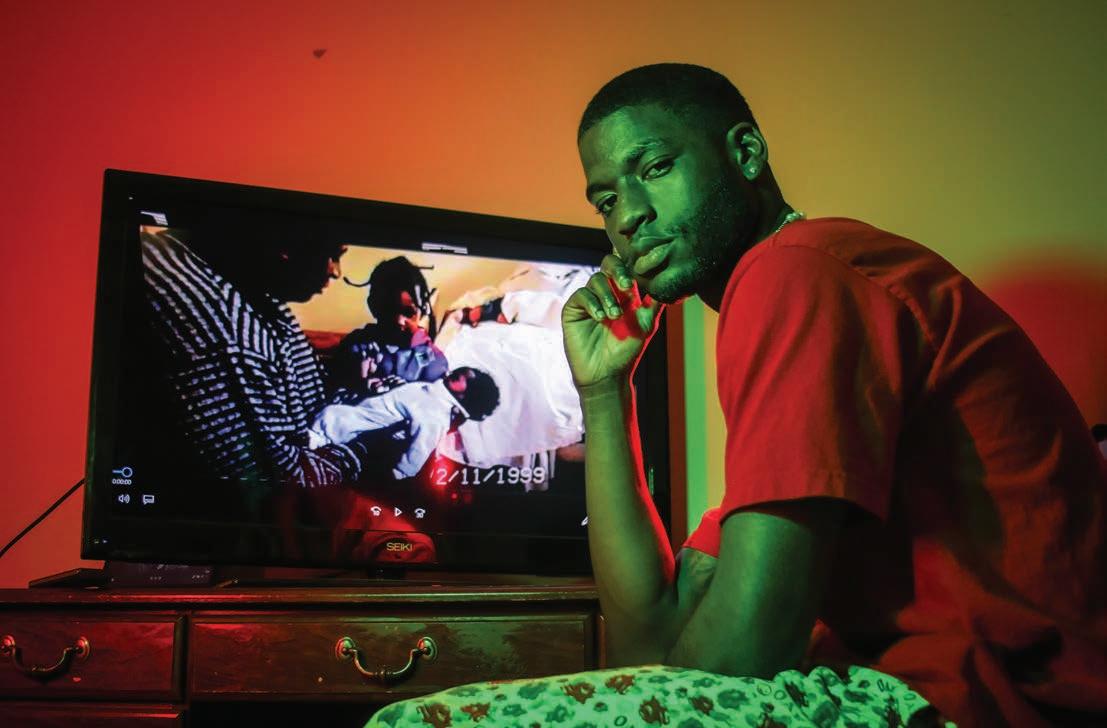
At college, Devin got his first taste of freedom. No check-ins, no restrictions, just free to make his own decisions.
He was still pretty introverted his freshman year, learning how to navigate this huge new world by himself. Even though he was new to the scene, he still challenged himself to take advantage of this newfound freedom. Devin was named the second runner-up for Mister Freshman at Savannah State, then later appointed to the executive press secretary for student body president. But when he transferred to UofSC, he challenged himself even more, pledging for Kappa Alpha Psi. Even when Devin was pushing himself to try new things, his new brothers saw even more potential in him than he saw in himself. Noticing his professionalism, they challenged him to join the National Pan-Hellenic Council (NPHC), the coordinating council of the Divine 9, the nine historically African American fraternities and sororities.
Devin’s experience of youth is full of confusion and excitement but that’s what makes youth so special… you never know what will happen next, but at least you’re here for the ride.
32
Lauren

Freshman Lauren Wagner believes youth is full of growing pains. Loss has been a consistent theme throughout her life. From losing her sister-in-law’s dad to suicide, grandpa to Alzheimer’s and grandma to depression shortly after her husband’s death. Of course, the consistent passing of loved ones is hard to cope with, but for Lauren, her time of mourning comes on a blue moon. Perhaps because she has dealt with so much grief, it’s difficult to cry, but sometimes when she thinks about a past family member it just “punches [her] in the gut.” But life is full of sadness, loss and grief; there’s no denying its presence. But Lauren keeps going. In her words, “what matters most is the time you spent together.”
Dealing with loss at a young age can lead people to let the grief take over. But Lauren chose to be different. She chose to take her pain and transform it into something she helps others with. Volunteering and community service have always been a part of her, starting with the Girl Scouts. Inspired to help others, she was able to do
over 700 hours of service through wildlife conservations, child protective services, nursing homes and orphanages. Currently, she is contemplating majoring in Neuropsychology because she knows how much mental health can affect a person.
Lauren wants to live life as it is. She wants adventure, love, heartache, everything. Because if she were to die tomorrow, she wants to know that she lived. Lauren’s youth, is truly, just her beginning.
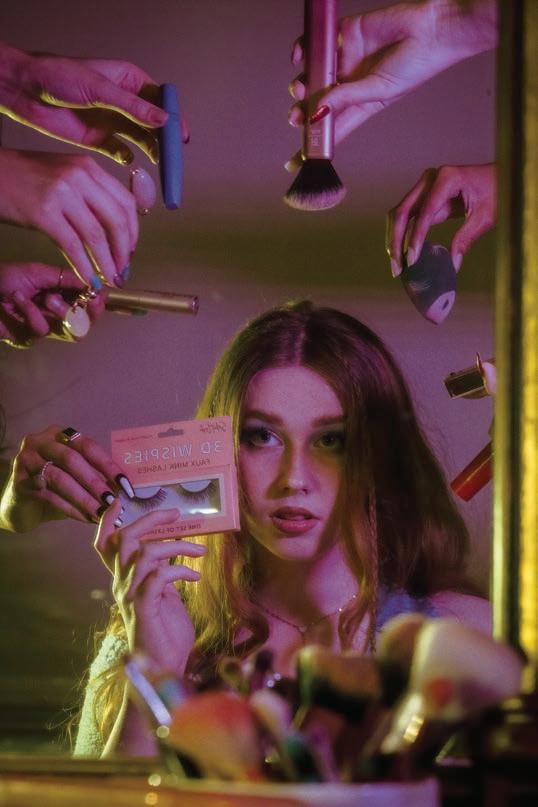
Tia

Tanishq “Tia” Simon has gotten to live through two ideas of youth. Growing up in India was a gift to Tia. The people and culture filled her younger years with color, and she particularly admired the unique history of her home country. While her Indian pride is strong, at times she felt held back by the strict lifestyle she was raised in. Whether it was the conservative school uniforms, the limited freedom or the expectation to get married before 25, Tia knew she wanted to be free of limitations, no matter how much she loves her country.
Moving to America was a dream come true for Tia because she gets to experience what it’s like to be free. Tia has also loved American culture for as long as she can remember. Watching Mean Girls on repeat made her feel like she could live the American dream. Everyone’s watched a movie or TV show where they want to embody a character’s entire persona (aka Maddy Perez), but it’s different for people of color. The people, the parties and the overall freedom to do and wear whatever she wants comes at a price. At some level, a person of color has to shed a layer of their identity to fit into these ideal, white narratives. Tia had to realize that she can’t idealize being American because it takes away from her cultural pride and identity. Now, she’s learned to balance appreciation with respect for herself as well.
Overall, Tia’s youth has been “an interesting journey.” Though America is nowhere near perfect, Tia was able to find her missing pieces of life here while staying true to her home.
33
Xavier

To Xavier Sapp, youth is the future and a constantly evolving time in everyone’s life. He looks at the big picture, sees what previous generations have lacked in the past and believes that Gen-Z can be better.
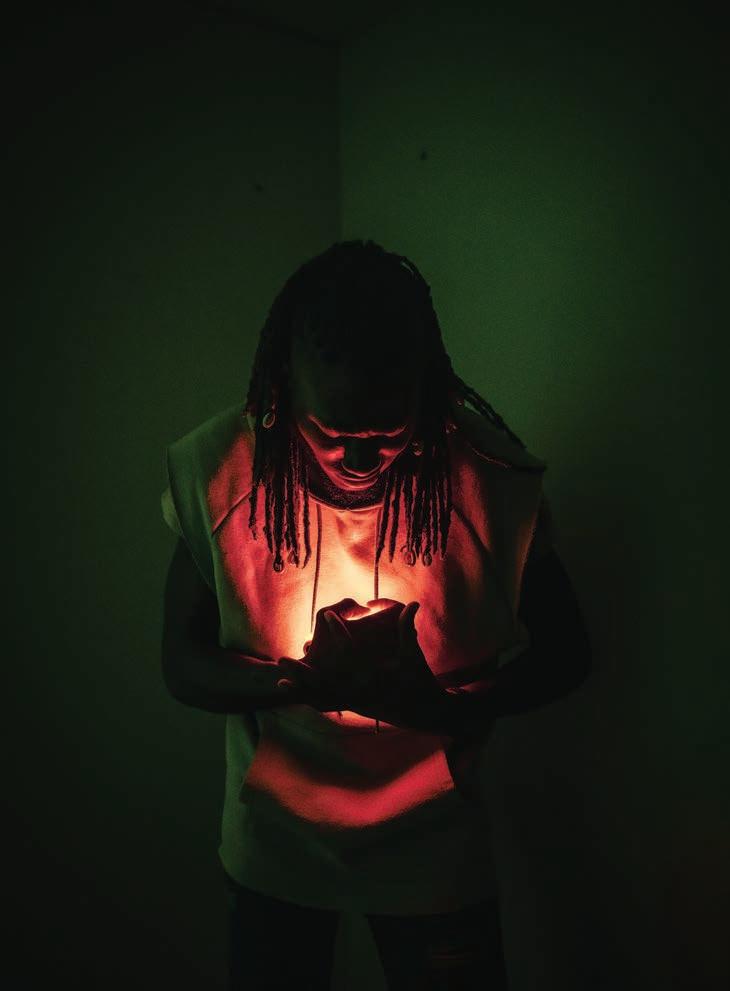


Xavier believes they’re more self-aware, open and accepting of historically voiceless identities. During high school, his family was picture perfect and expected him to be the same. They were hard on him, pressuring him to do well in school and go to church every Sunday. It was tough love, but it was still love. Being black requires you to work harder than everyone else, not to excel, but just to be in the same room. Xavier’s parents knew that and raised their son to be great. It’s a tough life to live at such a young age but he’s thankful for it. Now, it’s time for him to lead the life he wants to live.
Growing up, Xavier was an audience member, but he was ready to hop on stage. Though he was able to graduate high school early, his counterparts got more recognition, awards and appreciation for making the school look good. Constantly staying focused on his work left him contemplating who he was beyond school. Now that he’s older, he wants to change for himself. Xavier doesn’t know who he is yet, but he can’t watch everyone else succeed and go after their dreams while life just passes him by. He deserves his applause too and he’s willing to work for it. Coming to college, he was still headstrong in his studies but as he transferred to UofSC, he knew that he needed to start living for himself. And now he is. The Euphoria project is one of his first times stepping on stage, and he continues to challenge himself to do more.
Xavier believes youth is about change and recognizes that he, himself, has to change if he wants to be someone in this world. And it looks as though he’s doing a pretty good job.
Mikenzie
Mikenzie Turner’s youth in high school was all about having fun and finding herself. But it was also a time when she lost herself trying to fit in and be like everyone else. ‘Live life to the fullest.’ At the time, that looked like drinking, smoking and doing whatever she wanted, no matter the consequence. Going to a predominantly white private school that only had about a 64:8 ratio of non-black to black students is tough. At first, she wasn’t categorized as the ‘pretty girl’ so she had to make up for it in her personality. When she finally had her ‘glow-up,’ everyone noticed her. She was an athlete, got good grades and now was approved by her classmates. She didn’t want to lose that, so she started doing what everyone was doing. Looking back now, she wishes she didn’t corrupt herself and change from the caring person she was to what she describes as “a bitch.”
Around 11th grade, it all hit the fan. Her parents found out about everything.
From the alcohol to drugs to her most intimate moments. At the time, her relationship with her parents wasn’t the best, but she didn’t realize the impact of her decisions until her mom was crying for a week straight, learning about how truly Mikenzie felt. It was a dark time, but luckily her sister came in and she realized how many people love her still despite everything she’s done. She found herself again. She stopped conforming to society because it wasn’t her. She wasn’t living a life she wanted but a life she felt she needed to keep. By taking steps to better herself and her relationships, her parents, siblings and newfound friendships are stronger than ever.
Mikenzie has had her ups and downs throughout her life so far, but once she faced her reality, she decided to change it for the better. No matter our past, we can always learn, heal and improve from it. Mikenzie’s done it, and she’s happier than she’s ever been.
34


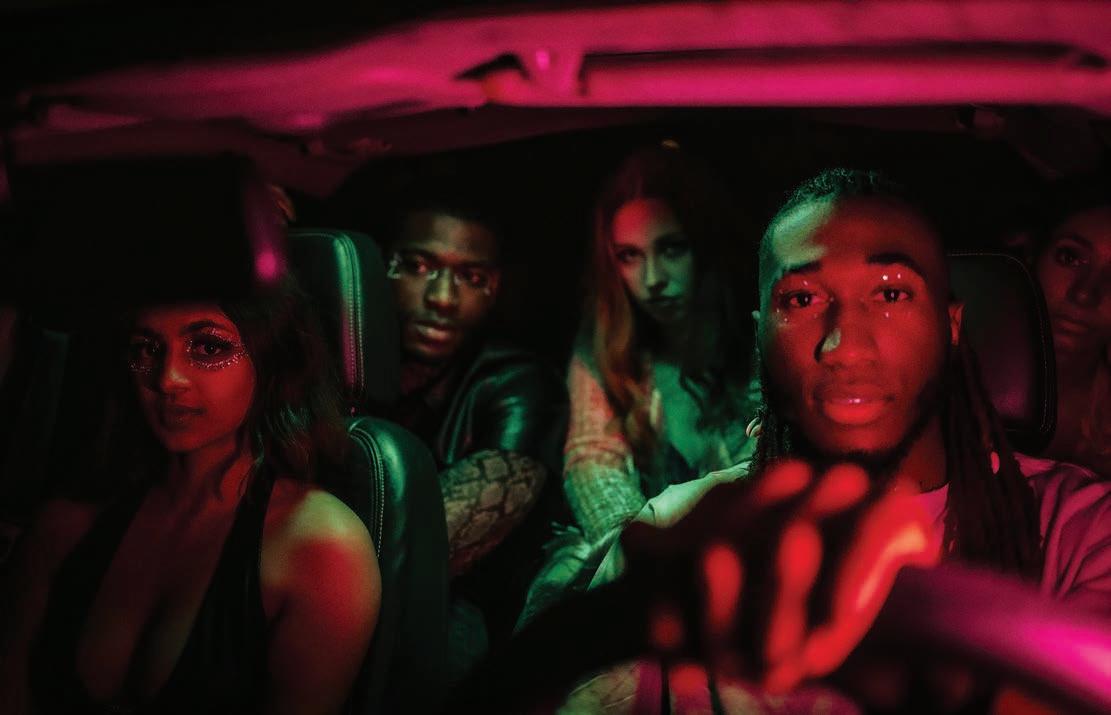
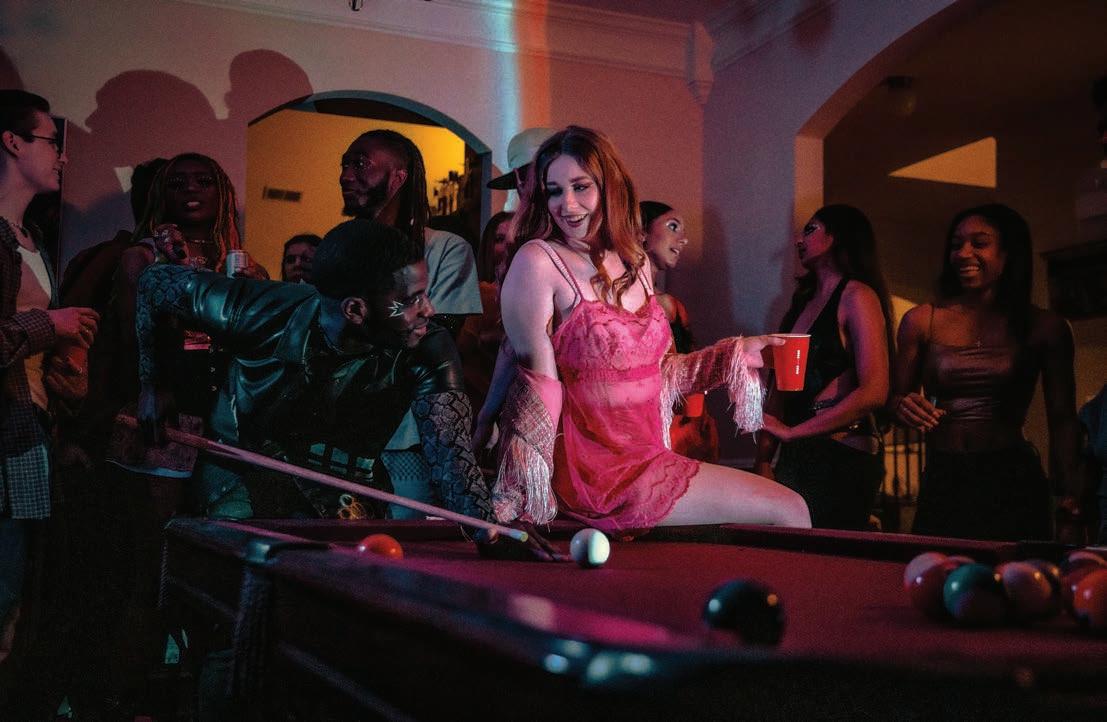
35

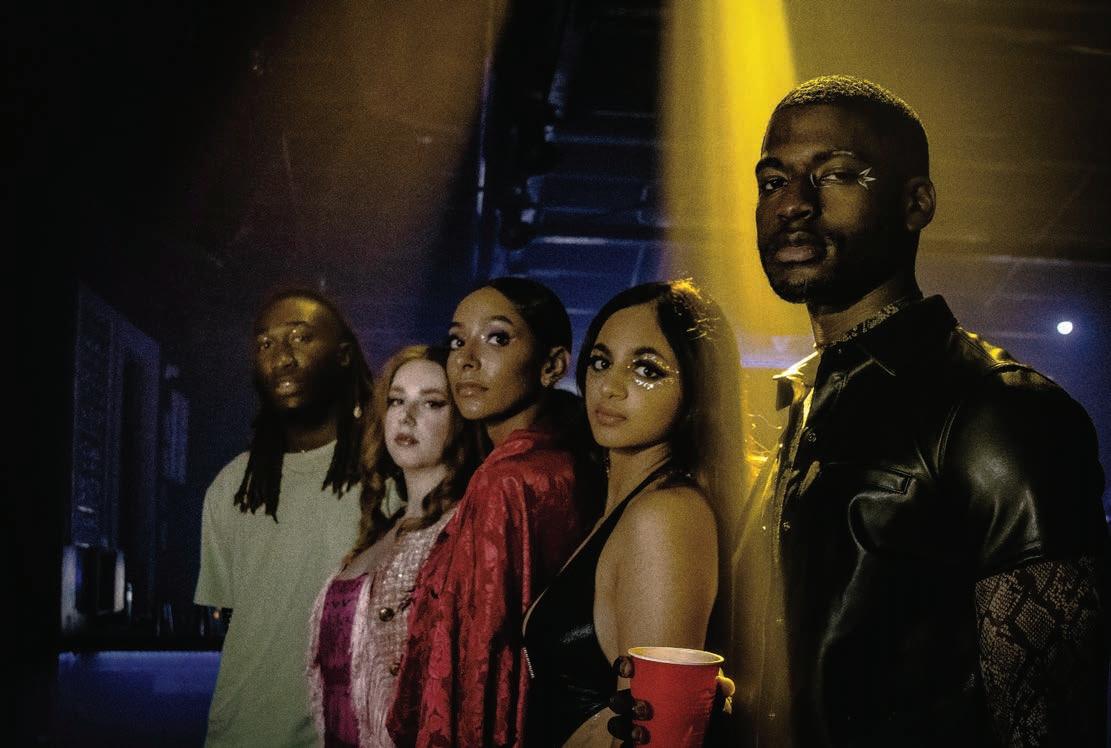



36


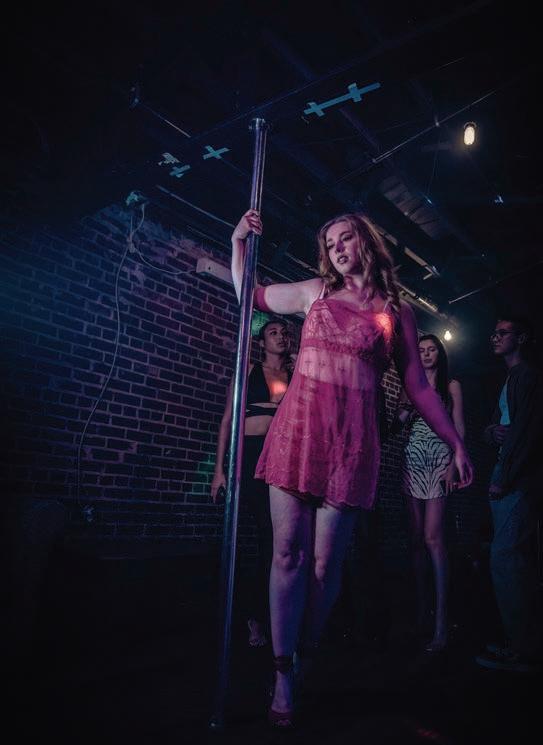

37
Everyone’s life is different. These are some of the most formative times of our lives and Euphoria is helping people realize that it’s okay to make mistakes.By bringing us into the head of Rue, Jules, the entire cast and even Nate, we see their story. As much as you hate their decisions, it’s hard to hate them because you not only see their shortcomings, you see the entire field. Why they are who they are. Euphoria shows you, you All the glitter, gold and garbage it comes with.

There is no ideal of youth you should look up to. Your life is your life, and you shouldn’t feel ashamed that you didn’t go out every weekend, didn’t party or didn’t have your first kiss. Or if you did do those things, then you can look back and reminiscence on good times before you knew what was coming. Now you can learn from the past and move on. Your mistakes don’t define you, nor your trauma, nor the time you didn’t live. What you choose to do with these experiences is what truly matters. And right now, you’re still young, you still have an entire life to live. So stop dwelling on the past, and start living for you. You deserve it.

38

A playlist of unifying bops, made for you by our social team DESIGN BY MARIA DESIMONE The Spins - Mac Miller Juke Box Hero - Foreigner Sex on FireKingsofLeonHoldMyHandHootie and the Blowfish &J
Rick-FreakSuperJamesAfrica TOTOPurple RainPrince Ribs - Lorde Waterfalls - TLC Scan here for the full playlist: SuperBassNickiMinajComeTogetherThe Beatles Unwritten - Natasha Bedingfield Santeria - Sublime -DownUpside JohnsonJackWayThisBorn GagaLady-HalfwayMeMeet PeasEyedBlack ofDropsTrain-Jupiter 39
PB PEOPLE’S BELOVED JAMS
40
Bucket List
BY CLARA BERGESON • DESIGN BY JENSEN BERNARD
Attend Columbia’s Pride festival in October

Tip a street artist at Soda City
Get an espresso martini from Kaminsky’s
Visit the UFO Welcome Center near Bowman SC
Buy handmade jewelry from Sugar & Spice in West Cola
Try a lemonade with espresso from Drip
Attend a theme night at New Brooklyn Tavern
Throw a gay brunch
Attend a Darty
Causally take coffee from Russel House without asking
Go to a drag show at PTs
Have some vegan “chicken” at Peace of Soul
Befriend the campus cats
Feed a horseshoe squirrel
Order a marg tower at Tio’s
Get a matching tattoo with your bestie
Tune in to a 1 a.m. radio show on WUSC
Submit a Rant & Rave to The Free Times
From the Editors
 BY LILY VINCOLA • DESIGN BY MEGAN WOOTERS
BY LILY VINCOLA • DESIGN BY MEGAN WOOTERS
42
Starting my own business with absolutely no idea of what I’m doing. Getting onions on my Publix sub just to keep things interesting. Saying yes to a casual hangout when it would be so much easier to stay in bed. Stepping out of your comfort zone is important for growth, no matter how small of a step it is. Escaping our realm of comfort is not only encouraged, but expected. For some of us, courage is asking out the person you (very obviously) stare at in JOUR 203, for others it means getting out of bed in the morning. I implore you to keep seeking discomfort but to not lose sight of the trivial things that keep you grounded. Hearing my favorite song come on for the thousandth time and stopping whatever I’m doing in my never-ending day to sing along is 3 minutes

and 53 seconds of mundane peace. We created this magazine with the intent to not only be a safe space but a comfortable one. Whether you are a freshman finding yourself or a senior about to say goodbye, G&B is a place you can see yourself represented. G&B is a sum of all those who touch it -- creators and consumers alike. As you flip through this magazine, I hope you find a little slice of home. G&B is finding comfort in the hectic and unfamiliar world around us. It encourages us to admire the little things that make us feel at ease. Go sit in your favorite coffee shop and peoplewatch, or order pizza and watch that movie you haven’t had the chance to see yet. Sometimes all we need is a moment of familiarity nowadays, even if it’s only for 3 minutes and 53 seconds.
Comfortably,
Lily VinCola, PR Director & G&B’s team of leaders
43
I started dancing just a few months after I learned to walk. My older sister wanted to go to dance class, and since she was the one who usually watched me after school, I was enrolled right along with her. I loved it. My fondest childhood memories all revolve around dance class. The hair rollers on dress rehearsal day, a million bobby pins glued to your scalp with hair spray.
Sitting in class the day all the costumes come in and bringing them home to show your mom. The music, the lights, the sisterhood you create with your teammates; dancing was the first thing in my life that I was passionate about. However, all roses have thorns. Growing up in small-town rural America, you can imagine the types of folks who live here. When I was outed as bisexual in high school, girls in my dance studio were taken out of classes by their parents. Some just didn’t feel comfortable around me anymore. Everything eventually worked out alright, but for the longest time I had an
identity crisis around being feminine and what that means when you like women. I started thinking if I’m a bisexual woman, am I allowed to be feminine? If I’m too femme, will girls even be interested in me? Since I like girls, am I supposed to find mini skirts and lip gloss sexually appealing?
As a child, I adored Miss Sharpay Evans. She is an icon, a legend and THE moment. Sharpay is blonde, bitchy, goal-oriented and loves the color pink. However, after much thought, I do not think I had a crush on Sharpay. I think I just saw someone who I wanted to be... blonde, bitchy and goal-oriented.
So, all of this to say, it’s time to declare the end of the “not like other girls” era. Being like other girls is actually so fun. They know the best iced coffee orders. Getting a full set of gel tip nails can transform someone into a whole new person. Taylor Swift actually goes hard. These stereotypes of “bimbos” and “basic girls” have been used in the media to make girls feel inferior for years, but in the words of Elle Woods:
“I object!” I want the joy of the dance class back, so I’ve started creating that ambiance in my everyday life. The lesson I’ve learned is that your sexuality and gender identity do not dictate your style. I realized for me, the more I lean into femininity, the more I find joy.

By girls, I don’t just mean those assigned female at birth or identify as she/her. Girls, or the gworls if you will, includes anyone who understands the experience of feminine joy. The gworls are the people watching rom-coms, getting their nails done for spring break and wearing princess crowns on their birthdays. When I say boys, I mean dudes. Actual bros who don’t do any form of self-care, in fear of being too feminine or just out of ignorance. I have lots queer friends who identify as male, paint their nails and put on lotion every night before bed - I’m not talking about these guys.
I want to be clear that I’m not excluding those who identify as nonbinary, transgender or agender from this narrative.
44
IT’S ABOUT DAMN TIME TO CELEBRATE FEMINITY. WRITTEN AND DESIGNED BY ALIZAJANE HICKS • PHOTOS BY LEXI CROFT
My underlying point is that what society has deemed “feminine” can be enjoyed by all - no matter sexuality or gender. Every human can embrace self-care if they want to! Think of “boys” as an overarching term for those with no feminine joy. It’s a common stereotype that women take forever getting ready. While the guys are simply throwing on a flannel and deodorant, the girls are going through hours of self-care rituals.
There’s, of course, The Bath. This generally involves a face mask, exfoliating and shaving. Next comes skincare. Face globes, jade rollers, gel eyecovers and a gua sha are pulled from fridges across the globe. Personally, I use vitamin-C oil, niacinamide 10% + zinc 1% oil, face wash, toner and moisturizer to get my skin prepared for the long night ahead. My favorite step of the skin-care routine is “microblading”, which is basically the gworls version of shaving your face. It gets all the peach fuzz and dead skin off of your face, so your foundation can lay on more even. It’s disgusting and yet incredibly satisfying. Be sure to finish off with a nice layer of moisturizer to protect from wrinkles and sun damage. It’s a nice little treat for your face after dragging an eyebrow razor across it.
After skin-care comes selecting the outfit, which is then protected by tossing a pink satin house robe on during the pregame. Then, hair is rolled into velcro rollers and spritzed with some water. While the rollers are drying, the final and most important event comes next: makeup. Doing my makeup is an art. It’s a form of meditation. It’s 45 minutes or so of just me and the mirror. All of that time for me to spend time with myself hardly ever happens with a busy college schedule. It was during this time of makeup self-reflection that I realized…. boys don’t do this. Now, it’s not uncommon to see guys and people who don’t identify as female in makeup. There are many male makeup artists, celebrities who wear it on TV and rock stars have always been seen with eyeliner. I mean boys don’t have this ... feminine ritual. They don’t sit on the bathroom counter surrounded by mountains of eyeshadow pallets making sure every lash is in the perfect place. Plucking each new brow hair that has grown since last weekend. Guys can be hygienic and take care of themselves, but they will never understand the delicacy and meticulousness that a feminine hand can bring.
I feel like so much of the way I experience this life is so foreign to the experience of most guys.
Boys will never know gossip. The sweet, sweet release of telling new updates to your closest friends. Gossip is genuinely what makes the world go ‘round. There’s a scientific theory called the Dubar theory where Robin Dunbar, the head of the Social and Evolutionary Neuroscience Research Group in the Department of Experimental Psychology at the University of Oxford, compares the humans’ need for gossip to the primates’ need to pick fleas off one another. The media made gossip taboo when most gossip isn’t actually spiteful. Dubar and his team of researchers did a study in Britain that concluded that only 3% - 4% of gossip is malicious. It’s storytelling! It’s history being passed on to one another. For example, think about pre-social media times when you found out that people were engaged by seeing them in the local grocery store. You would have taken that information to church or the hair salon, and then suddenly the whole town is aware that Rebecca is tying the knot with that Steven boy that coaches the Little League team. Have you seen him with those kids? He is just so sweet. You know, I heard that his mama donated those new tablets to the high school. She has some fancy office job in the city and just had her youngest graduate. I think she’s on the PTA, really nice lady. See, isn’t that so fun?
So if gossip is human nature, why is it usually considered feminine? Sociolinguist Deborah Tannen researched relationships between sisters, mothers, daughters and friendships between women. Her studies talk about how from childhood, girls spend more of their time just sitting and talking

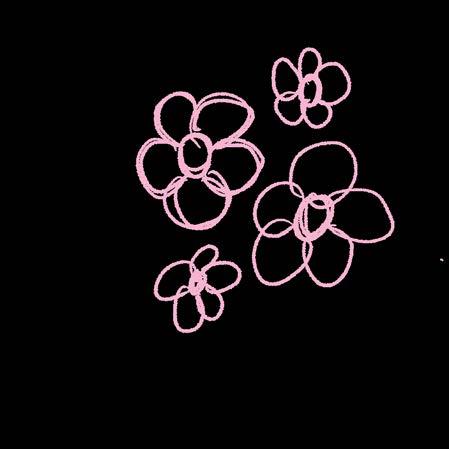
than young boys. I think it’s beautiful the way that we confide in each other, using secrets as currency to prove our trust. However, not everyone has viewed gossip this way. In the Middle Ages, if a man was told his wife was gossiping, he would wrap an iron muzzle around her face which would puncture her tongue if she tried to speak. We owe it to our grandmothers to reclaim the reputation around gossip. We are made to keep history alive. Without us telling stories, our granddaughters won’t be able to learn from the mistakes we made. Tannen reiterates the notion that gossip’s bad reputation is undeserved. She stated, “being interested in a friend’s personal life is a show of caring; a way to create closeness.”
Boys will never know what it means to feel pretty – and that makes me so very sad. When spending those long hours of perfectly contouring my nose or redoing my winged liner, know that I’m not putting in that work for some bro at the bar to think I’m pretty. Bro at the bar will think I’m pretty because I am. I put in those hours so when I take a selfie I get to think, “Damn, I look good.”
45
Boys don’t feel beautiful. I smoke the occasional Marlboro Gold and have some shitty tattoos. I do not think my body is a temple. Instead, I like to think of myself as art. My body isn’t perfect according to beauty standards, but she is perfect to me. I love my tummy, my long hair, my moles, my hands and all the spaces in-between. I pay attention when little things change, like when the texture of my skin is different or when water in one city makes my hair feel different than the water in another. I truly think of myself as a beautiful creature. It makes me sad to think that there are people out there that will never feel that way about themselves.
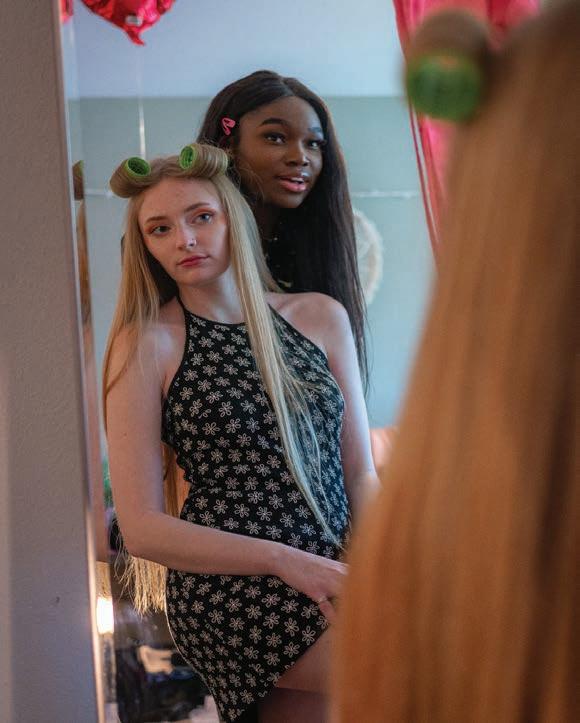

Boys will never know just how soft everyday life can be. Somewhere in our souls is the innate instinct to nurture a home. It’s common for people in the late stages of pregnancy to “nest”. Nesting is the overwhelming desire to prepare a den for your baby. It happens differently for each person. Some paint, some organize clothes, some clean. I feel like I have to “nest” in every setting I’m in. As soon as I inhabit a space, I have to decorate it. Not to brag, but boys are often very impressed by my room decor. They are so shocked that you can have multiple decorative objects that have no actual purpose except to express personality and bring joy. I had one particular cis, straight guy in my room one time for...no real particular reason or anything. This current UofSC student wanted to remain anonymous in this retelling, so for now let’s just call him Harry Styles. He complimented my posters and decorations, and he asked why I had an old map hanging on the wall. The answer is: because I think it looks cute there.
This prompted a conversation about girly things and then femininity. I asked him if he does any type of self-care for himself. He said he, “does his best to keep a skincare routine.” His skin care routine is comprised of three steps: exfoliate, cleanse and moisturize.
I asked Harry if his identity as a guy has ever been threatened by a typically feminine thing. He responded, “I’m personally very comfortable with my sexuality and identity, and what I do for myself doesn’t change who I am.”
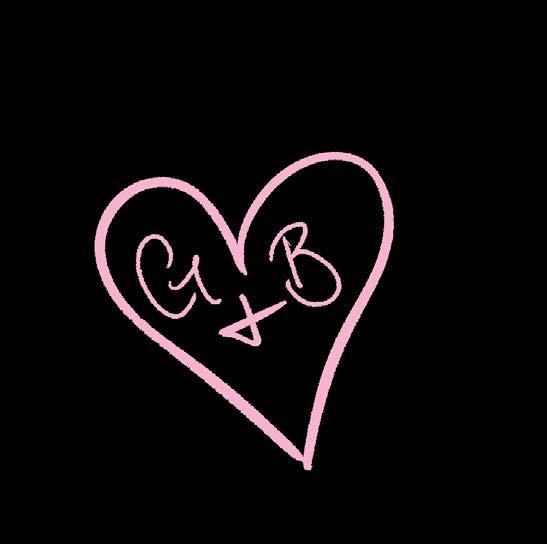
Period.
Now, to be clear, I don’t think we should applaud men who respect women and others around them. That is the bare minimum. However, I do still admire a nice guy who can avoid the gas-lighty, misogynist thing. I asked Harry how he avoided the ideas of toxic masculinity. “It’s easy,” he said, “It’s definitely easier being in college and that sort of environment, it definitely helps to open up my eyes to new opportunities and to see the things people do in a new perspective.” Maybe boys do understand a little bit.
46
Maybe there’s a near-future ahead of us where we can all go to Starbucks, get manicures and destroy the patriarchy. I hope we start to break apart the word ‘feminine.’ And the word ‘girl.’ And ‘gender.’ And all of the unnecessary labels humans created. Let’s all go out back, smoke a cig and gossip together. Let’s listen to Taylor Swift and admit that she makes great music (and that Kanye was wrong). Let’s all do a face mask, talk about our feelings, share sex stories, drink peach wine and put a little blush on our noses. Let’s go to therapy and learn to be okay with boundaries. Let’s always ask for consent. Let’s put on some lipgloss and have equal pay. Let’s all be in control of our bodies. Let’s let humans age without shame. Let’s let everyone have sex with as little or as many people as they want without judgment.

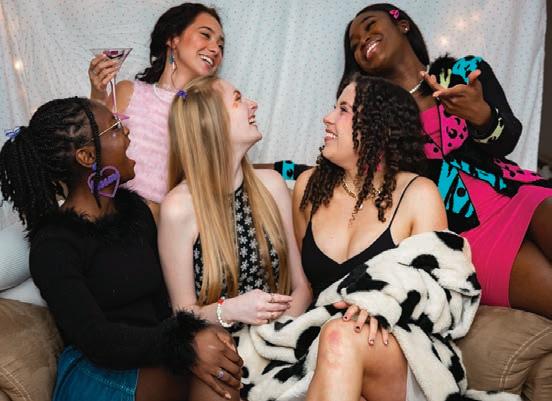

Let’s all dress up like hipsters and make fun of our exes.
I challenge you to embrace your inner femininity in whatever way feels comfortable for you. Go buy some flowers. Take a bubble bath. Paint your nails. Have a good cry. Then, call me and tell me the hottest goss that you’ve heard lately.
47
These Clothes Make You Look Gay
Can you look gay? What does it mean to dress gay? Is it a safety response can that be taken advantage of? Why is it wrong to say “wow he is so gay” based off a person’s outfit?
BY BRIANNA RAO • PHOTOS BY JACOB ZAMBRANO • DESIGN BY MEGAN WOOTERS
“You dress gay,” a stranger observes, her eyes following every inch of my straight, opposite-sex-loving body until they reach my six-inch heels.
It’s obvious: she is playing tug of war between my outfit, gender and sexuality. And while the stare isn’t ideal, it is something I have learned to deal with. But this time I’m not just greeted by the stare, it was followed by that observation.
That particular observation is all the fuel I require to cold-water soak a stranger because what does it mean to dress gay?
Dressing gay is wearing “something eye-catching with lots of flare,” UofSC sophomore, Andrew Peters, said. “Usually accessorized, with lots of different parts.”
However, not all UofSC students agree.
Some UofSC students believe that 2020 began the era where limitations or separations between garments based on different genders became an outdated notion.
These students argue that clothes are mere fabric additions to one’s body; they cannot define the personality, sexuality, individuality or intention of the person that’s wearing it – but they can enhance it.
The bottom line: Fashion is physical art.
Sexuality is abstract art.
“You can’t determine a person’s sexuality by the way they dress,” Arin Froidl, a reporter for Linden Link wrote in 2018. “Just because a woman wears more traditional masculine clothes does not mean she identifies as queer, and just because a woman wears traditionally feminine clothes does not mean she is straight.”


Since this is a safe space, I’ll tell you one of my darkest secrets: I applauded Harry Styles’ 2021 Vogue Cover. You may be thinking, “duh, me too!” But hold your horses, because this is where fashion gets bumpy. There is no need to applaud a man in a dress, even if that man is the icon that is Harry Styles!
“I’m not just sprinkling in sexual ambiguity to be interesting,” Styles said. “I want things to look a certain way. Not because it makes me look gay, or it makes me look straight, or it makes me look bisexual, but because I think it looks cool.”
Though Styles is the face of his style, without his team of designers and stylists, the image of feathered boas and funky printed pants would not be reaching our eyes.
Jean Paul Gaultier, a French designer, was one of the first designers to consistently break down gender stereotypes. Gaultier’s
most controversial designs included men in plaid skirts, open-toed platform basketball sneakers, sarongs, tank tops and see-through harem pants. These pieces prompted The Times’s fashion critic, Bernadine Morris to ask:
“If it’s all right for women to wear fullytailored clothing, why isn’t it all right for men to wear skirts?”
“Wearing a skirt doesn’t mean you’re not masculine,” Gaultier responded.
“Masculinity doesn’t come from clothes. It comes from something inside you. Men and women can wear the same clothes and still be men and women.”
The slow realization that clothes do not determine or take away from one’s masculinity or femininity has allowed artists to push boundaries and express themselves in pieces that are typically un-thought of.
Prince, the acclaimed singer, expressed himself through feathers, glitter and “feminine silhouettes.” His expression through makeup, heels and flamboyant clothes caused the 1970’s mainstream American media to label him as gay. With the assumption in the late 1970s and 1980s that Prince was gay gaining more attention, Prince responded artistically by releasing his 1981 album titled Controversy. The album leaned into the rumors and speculations about his identity through lyrics such as, “Am I black or white / Am I straight or gay / I’m not a woman, I’m not a man / I am something that you will never understand.”
When asked in 1997 during an interview on VH1, comedian Chris Rock asked: “Was [your fashion] an act, or were you searching for your sexual identity?”
Prince responded with “I don’t suppose I was searching really. I think I was just being who I was. Being that I am. And there’s, um, many sides in that as well. And there was a little acting going on, too.”
At this time, this sentiment was not easily understood by the American public as one’s gender identity, sexual identity and artistic persona were often conflated.
In our current digital age, the artistic persona is all about crafting a style that can be branded but also gives flexibility for its audiences to try for themselves.
“I absolutely love seeing people becoming more and more fearless about embodying authenticity, especially when the gender norms are snapped in half,” Meghan Kennedy, a writer for the Central trend, wrote in 2021. “All in all, just let anyone wear whatever they want because clothes do not define gender in any way, shape or form.”

48
The final verdict: clothing is gender-fluid.
The question burning on everyone’s tongue: is clothing sexuality fluid?

“Finding happiness in dressing as a woman and being attracted to men are two separate things. One has to do with your own gender expression and the other has to do with who you are attracted to,” Laura Anna Stuart, a journalist for Shepherd Express, wrote in 2013.
Bisexuality is a sexuality; not a fashion trend.
Individuals who are bisexual do not dress any differently than straight or gay people. In general, most people do not choose their clothes based on who they decide to get freaky with.
Thus, fashion is not confined to gender or sexuality.
Knowing this, remember that you are the only one who is entitled to choose what to wear or how you define yourself.
But, as the 21st century has broken down many gender stereotypes, gay fashion stereotypes still exist.
UofSC sophomore, Jordan Murphy said “cuffed jeans, Doc Martens and flannels” are most commonly associated with the LGBTQ+ community.
In the 1960s, Doc Martens were first released to the American public. These military-style shoes gained their moment in the spotlight within many realms including activists, punks and the queer community.
“A big factor in their adoption by those on the margins of society was their price tag, accessibility and availability in second-hand shops,” journalist Alexis Zygan wrote in 2021 for Capilano Courier. Women who were more likely to work nontraditional jobs in male-dominated fields such as skilled labor wore Doc Martens, often pairing them with a flannel, jeans and a carabiner attached to the belt loop.
In 1976 a “which shoes fit you,” headline
appeared in a Dyke Quarterly magazine intended for queer women. The ad had an image of a wedged heel as Option A and a 10-eyelet Doc Martens boot as Option B. Underneath the two images, the caption read, “If you choose Option B then Dyke Magazine may be for you. A new magazine of Lesbian culture and politics.”
By the 1990s, Option B wasn’t picked because it was the lesbian choice, but rather due to its increasing popularity among teenagers within the 1990s Grunge community.
“The lesbian shoe has, well, rebranded by the fashion industry,” Eleanor Medhurst wrote in Dressing Dykes in 2020.
Still though, pieces like the Doc Martens and flannels on their own do not automatically mean someone is gay or straight if they decide to wear them.
“We’re as varied and as blended as the rainbow itself,” author Joi Miner wrote about the LGBTQ+ community in Reckonsouth in October of 2021. “Even those who fit in those basic gay stereotypes have layers to their preferences that appearance won’t easily reveal. I can tell you, and the world is slowly showing us all, that our preconceived notions can be very, very wrong.”
“I think it can show different aspects whether you feel more masculine or feminine and how you want to express those sides,” UofSC student, Molly Corcoran, said.
Because there is no concrete definition of gay fashion (and I hope there will never be), for some individuals in the LGBTQ+ community, presenting themselves as gay has been a challenge.
“I’ve tried to change my accessories,” Miner wrote. “I tried boy clothes, but they weren’t flattering to my figure, and boxer briefs aren’t my swag. I spend hours a day trying to figure out how to ‘look’ more gay. I sport everything to advertise my gayness from bracelets to gay-centric tees to a rainbow lipstick kiss tattoo on my neck to rainbow hair.”
“I don’t want to lose out on a date or sex because other gay guys don’t notice me,” John Paul Brammer, a gay man in his 20s, wrote for Out. “I spent too much time in the closet to spend even more time blending in.”
To remedy the issue presented by Brammer, some individuals of the gay community have emphasized finding their personal style while adhering to some of the gay fashion stereotypes. This compromise has brought comfort to individuals as their outfits can be a calling card for other queer people, allowing them to build communities built on acceptance and genuineness.

“People should be allowed to dress however they please without anyone else making split-second judgments of them,” Froidl wrote. “If you want to wear skirts, wear skirts. If you want to wear button-downs, wear buttons-downs. Don’t let society’s expectation of your gender dictate what you wear.”
But in the end, I’ll leave you with this: don’t be that pest that asks someone else why they are dressing gay. Instead, better yet, ask yourself what it means to dress straight.
49
OF THE OPEN INTERNET

An explanation of non-fungible tokens and a look into one student’s work with NFT’s and mental health.
BY KEVIN CONNAUGHTON • DESIGN BY SAVANNAH NAGY
SO, YOU’VE BEEN HEARING people mention these NFT things recently. Maybe you’ve read something somewhere about it. Maybe one of your friends is trying to convince you why it’s going to change the world. And maybe, just maybe, you have no clue what they’re talking about. You know that they have to do with cryptocurrency. You know that they have to do with art. But what exactly is this new craze and what are its applications?
One student is determined to make waves in the professional sphere using NFT’s and explain their utility to the public.
Cal Cibel, a senior business major at UofSC, has always collected things. “Pokémon cards, sports cards, I’ve been collecting my whole life,” he says. So when NFT’s came into the market in 2021, he was excited at the prospect of combining business with collectibles. NFT stands for non-fungible token, used to represent ownership of unique items. Whereas normal currency like dollars are considered fungible tokens (their value defines them as opposed to their properties, and they can be replaced), non-fungible tokens are completely unique and cannot be copy-pasted. In the business sphere, “NFT’s are like stocks at the end of the day,” Cibel says.
“If you own a token, you have shared interest or investment in a project.” NFT’s can take many forms, including digital art, gifs and other media.
And that NFT can
serve as a trading card in an NFT market and patronage to a small business.

Cibel’s project, The Gnarwhals, is founded on the premise of serving the mental health needs of the community. His mother, Dr. Jane Baxter, is a prominent psychotherapist and the founder of PsychFit, a wellness program that combines fitness and psychotherapy. Wanting to help others become better human beings, Cibel decided to start a company where people could purchase Gnarwhals, small cartoon narwhals hand-drawn by his sister, through an NFT marketplace. Ownership of a Gnarwhal would
to “a subscription service. Ideally, you’ll get a Blessing Box every month with self-care products inside of these boxes.” Hoping to partner with self-care e-commerce sites, Cibel really wants “to expand and make the project more inclusive.” Joining the Unicorns of the Open Sea (a fun name for Cibel’s cohort) also allows for biweekly Twitter podcasts with Dr. Baxter herself. “It’s so cool to work with my family,” Cibel says. “This first month is proof of concept, but it’s been an absolute thrill of a journey.”
50
It’s a noble cause, and it’s one that Cibel faces with determination and grace.

So, how does one get involved in the NFT world?

Cibel states that while the market is complex, it is certainly navigable. “You can buy NFT’s on different networks,” he says.
“Using Ethereum, which is like e-cash, like bitcoin, you can create contracts that can be applied to art, music, labels, real estate.” Cibel is referencing smart-contracts here, which are lines of code that perform a blockchain transfer once the predetermined conditions are met, ensuring the safe transfer of goods without any third party or intermediary such as a bank. Essentially, smart contracts allow for transactions to be quick, clear, and trustworthy. “It’s a verification service built using code,” Cibel says. “It’s labeled as a commodity.”
But, wait! Just because you have some viable cryptocurrency doesn’t mean you should foist it over to the first salesman who comes your way. “Research projects people like,” Cibel encourages. “Start with credible YouTubers, people who are good actors. Find a community that you really like where the founders are doxxed (meaning that their information is publicly available) because they’re less likely to scam you.”
Ultimately, he encourages newcomers to the market to follow their hearts. “Find a balance between the product, the team, and the art. It’s better to buy in and learn like that.”
NFT transfers via smart contracts fundamentally work through blockchain technology. Blockchain technology is a

database of digital information that is shared by many different users. Instead of storing information as one large mass of information, blockchain splits data into small ‘blocks’ (which link to form a chain), and these blocks are ordered chronologically and are viewable by all concerned parties, guaranteeing transparency and fidelity. Blockchain technology is decentralized, meaning that no single entity owns the information. Because the information is not stored in a single place, it is also easy to spot and correct data irregularities (potentially caused by an interfering bad actor). When purchasing an NFT, the transaction occurs through a smart-contract made possible by this technology. Cibel states that blockchain is useful for “decentralized finance”, taking away the constant jockeying for ad-space by corporations. Blockchain requires no middleman, as the transaction is traceable and instant.
Cibel’s project showcases all of these complex terms in action, as he uses this technology to spearhead his mental-health
crusade with his family at his side. “I think it’s a great platform for these smaller businesses,” he says.
“At the same time, it’s the same struggles of entrepreneurship.
Underpromising and overdelivering is something this space is focusing on. It’s definitely hard, and I wouldn’t recommend it to everybody.” He remains hopeful about the future of this fledgling industry and is excited about the innovation and imagination it might inspire in others. “Most small businesses fail,” he says. “But, innovating ideas, innovating art, innovating utility, focused on community? Those people will succeed.”
The world of NFT’s is a fusion of coding, commerce, and the proliferation of digital art. They serve as a way to solidify ownership of unique art by the creators while also functioning as an avenue for small businesses to reach larger audiences in creative ways. While some call NFT’s a passing fad, there is potential that these tokens (or blockchain technology at the very least) will start to fold into mainstream media, fundamentally altering how users engage with the internet and online content. An exciting new field, it is an unregulated Wild West of trading where “some people create legacies and some create scandals.” Cibel hopes to do the former, putting some good into this world.“We’re building a community based on mental health. When I saw how strong the community aspect of NFT’s was, I knew it would be a good route to take.”
If you’re interested in Cibel’s project, take a look at the group’s Twitter!

@thegnarwhalsnft



51
Meeting The Due Dates of Love
There seems to be an unspoken timeline of love milestones among society that needs to be spoken about

 BY RAEVA BALI • DESIGN BY LILY FERGUSON
BY RAEVA BALI • DESIGN BY LILY FERGUSON
Welcome to the Love Milestones course! There are a few due dates you need to keep in mind:
• First kiss due at 15 years old
• First hook-up due at 17 years old

• First break-up due at 18 years old
Failure to meet these due dates will result in an “F” for upholding societal expectations but an “A” for feeling inadequate and undeserving of love.
As far as extra credit goes, here are some assignments you can complete to boost your grades if you fall short:
• Marriage due at 25-27 years old
• Parenthood due at 29 years old
• Divorce due at 31 years old

If you have any questions about the coursework, we, unfortunately, cannot alter any of these due dates. No late work is accepted.
This analogy of traditional “love milestones” that are often seen in society may be a little dramatic, but there’s no doubt that there is an unspoken timeline of events that just have to take place for any individual to feel that they pursued love “correctly.”
This ideology should not come as a surprise, since it is common within popular culture and certain mediums like TV, movies, music and even everyday life. The tropes of awkward, youthful first kisses and even more awkward first hook-ups are often depicted in many forms of media, high school dramas especially. As an example, I’m sure most of us have heard this quote from the character Jules Vaughn in the show Euphoria:
Euphoria is a more recent high school drama, and although that piece of dialogue was placed for comedic effect, It still encourages this idea that high school is the prime time for achieving these milestones in love to remain cool or deserving of love.
To make matters worse, there are often double standards placed within this unspoken timeline. According to an article by Bustle, saying “’I love you’ normally comes about five months into a relationship, according to the survey, or if you want to be precise at 144 days.” Five months seems like a good point, but what about those who think that five months is too fast? Or too slow? If a person proclaims their love for their partner too fast, they’re desperate. If they say it too slow, they’re uninterested. It’s a twisty turn to reach societal approval when it comes to love.
I reached out to a few students with varying ages and experiences on campus who wished to remain anonymous, asking them their perspectives on late bloomers when it comes to love:

“B***h, this isn’t the ‘80s. You need to catch a d**k.”
52
Q: How old were you when you had your first relationship?
Person A: 14
Person B: 20
Person C: 17
Person D: I haven’t had one yet.
Q: Do you think there’s a “timeline” for stuff like first kisses, break-ups, etc. in life?
Person A: I don’t think there’s a set “timeline” but I do feel like everybody should experiment and go through that like, trial-and-error process with different people sooner than later to find out what they like.
Person B: No, I think putting pressure on people like that is dumb. Also, it shouldn’t really matter when you do that stuff. Like, I personally don’t care when my friends had their first kiss or something.
Person C: No. Everyone should be able to do what they want to do when they want to do it.
Person D: Definitely not. I know people in their 30s who haven’t had their first kisses yet, and they’re living life just fine so I don’t think following a “timeline” should be that important.
Q: What would you define as “going too fast/slow” in a relationship?
Person A: I feel like if you’re going too fast, you’re going to know that. Like, if you’re super uncomfortable then things are probably too fast. But like, I guess if you’re getting bored then it’s too slow.
Person B: Going too fast is probably like, saying ‘I love you’ on the first date, ya know? That’s a little too much for just meeting someone. Going too slow is probably when there’s no spark anymore between you guys, but I don’t think being overly cautious in a relationship is bad either so... I don’t really know.
Person C: I mean, I don’t think there’s such a thing as going too fast or slow. If it feels right, it feels right. I met my partner a year ago and now we’re engaged, and I’m pretty okay with that.
Person D: I think that moving too fast is just a walking red flag, but moving too slow can make each person feel unsure. I think what matters is just that each person is comfortable and communicates that.
Q: Do you think the expectations put on individuals to do all these things (i.e. first kisses, break-ups, etc.) presented in the media are harmful?
Person A: I think the way the media portrays them is dramatic for sure, but I think since they’re usually just fiction they shouldn’t affect someone that much. Live your own life.
Person B: Yeah, I think the like over-the-top relationships in movies and love songs and stuff are ridiculous and not realistic at all.
Person C: Honestly, I just think relationships in TV shows and stuff shouldn’t be taken seriously. I can see how they would be harmful though since romance is such a big concept and it’s really unrealistic in media.
Person D: Oh definitely. I remember growing up thinking that if I didn’t find “The One” when I was like 15, that I had failed at life. That’s obviously not the case, but media like that definitely made me doubt myself.
Q: Did you ever feel pressure to achieve these “love milestones?”
Person A: Kind of. My friends started getting boyfriends in middle school, so I felt like I had to have one too to fit in.I grew out of that real quick though, and now I make my relationships on my own time.
Person B: From my parents, yeah. They kept being like, ‘When are you bringing someone home for us to meet?’ Like, sorry Mom, I’m too busy crying over a chemistry final to be emotionally available to someone right now.
Person C: Not really, I never really hung around people who judged me for stuff like that.
Person D: Oh for sure. When I turned 18 and my friends started teasing me about how I hadn’t even gone on a date yet, I started questioning all of my life decisions.
Q: Do you still feel those pressures?
Person A: No, it’s not worth it to listen to people who will judge you for that stuff.
Person B: I mean, I got in my first relationship and that seemed to appease my parents so... I guess not.
Person C: Now I do, yeah. A lot of people judged me and my fiancé for getting engaged in college, so I feel pressure to do what other people want me to do. I’m not going to do that, but it gets hard sometimes.
Person D: Sometimes. I’ve learned to not
care as much, and I’ve found that a lot of people are like me and haven’t done all these milestones yet either.
Q: Finally, any advice for students currently seeking love?
Person A: Just aim for happiness, honestly.
Person B: Get off Tinder. Right now.
Person C: Do what makes your heart happy, even if it’s not what other people or society likes. Life is too short to worry about society, in my opinion.
Person D: Set your own pace. It’s better to wait for that right person than rush into that really bad one.
It’s all about process over product when it comes to these love milestones. While it’s easy to say “set your own pace,” it’s very hard to uphold when there are so many societal standards that prevent achieving it. In the end, this unspoken timeline of who does love “correctly” is definitely arbitrary, and setting your own pace really creates the relationship we all are trying to capture in life.
So, thank you for enrolling in this Love Milestones course! Many students do transfer out of this course to pursue Embracing Self Confidence 101, which admittedly has better reviews.
53
Color of My World
Four UofSC students discuss different aesthetics and surroundings that bring them hope, security and identity.
BY BRITTANY MYERS • DESIGN BY MELISSA BORGERDING
C
ollege is full of ups and downs. Given the current state of the world, many things are constantly shifting and, while adjusting to young adulthood, we learn to cope with the ever-changing society around us.
Though we can’t always be certain what lies ahead, at least we have the little things that bring us comfort and peace. Garnet & Black was able to sit down with four UofSC students, all of whom are in different stages of their college careers. Their ideas of comfort and expression are similar but still different.
The average college Freshman has a lot to become accustomed to. In between transitioning from the structure of high school to college by itself, students are also moving to new towns and cities with new communities and standards to learn about. For some, the transition may be more challenging than usual. Sometimes it’s just a matter of taking the time to get to know their new environment. That is how it has been for UofSC student, Olivia Johnson.
Johnson’s story here at UofSC is just beginning. She is a part of a few organizations on campus including the NAACP Outreach Organization and Melanin and Movement. She has found a community that has helped her to become accustomed to her new chapter in life.
“I was lucky enough to have a roommate that I have known since middle school,” she said. “I felt comfortable in my living environment.”
And her living environment is comforting indeed. The study rooms in the Patterson dormitory have a lot of natural lighting and she considers them to be a nice place where she can clear her mind. Her actual dorm room is decorated in pastel pink and cream with vines hanging on both sides of the room. Coupled with her lavender air freshener, Johnson believes that her room represents the peaceful and relaxed side of her.
“I always felt like my room was a spot to just relax and chill,” she said. “I believe the colors represent peace and relaxation.”
When it comes to self-expression, Johnson finds that some of the best representations of her identity are in her wardrobe.
“When I am feeling the most confident, I go for the dresses and the skirts,” she said. “I like to wear bright colors like yellow and orange.” She also likes to wear neutral colors such as white and brown whenever she wants to dress a little more nice and chic.
When she prefers to remain lowkey, she wears black and oversized clothing. She feels that because of her height, she is not very hard to miss. Since her middle school years, she never liked the attention that was drawn to her due to her height or other features. Fortunately, she has grown to feel more comfortable with herself.
Johnson is enjoying herself here and her attitude is optimistic. An important aspect of her college experience is to interact with her student body, though she understands that for some it may not be as easy.
“Don’t get discouraged,” she said. “Talk to people. There are always people who will help you in different ways whether it is academically or personally.”
Sophomores are in-between, right? Still just getting started and finding their way. Most professors aren’t as flexible and understanding to sophomores as they expect them to be better equipped with what it takes to succeed in college. Maybe you’ve transitioned from a dormitory and are now in a place of your own. Everyone has a different experience, and UofSC student Tyler Westall elaborated on his.
54
Westall is progressing through his college career well-adjusted. Like Johnson, he finds that the Journalism school is the most inviting building on campus with its modern layout and open floor plan.
“All the classrooms are kept up well,” Westall said. To him, the humanities building is the least inviting because it is so old and outdated, “It feels like a prison because the windows are so narrow.”
When describing his room, Westall found that the dark green and white walls made the room feel earthy. He feels that this allows his nature-loving personality to shine through.
Furthermore, he also expresses himself through his wardrobe. When he prefers to stand out, he wears his favorite colors yellow and red. When he wants to blend in, he wears gray and black. However, it is his large wrap-around dragon tattoo that we both found to be the coolest.
“I think it shows that I am carefree,” he explained.
Westall has adjusted well to campus life and believes that less crowded and minimalistic spaces are the most comfortable.
Now, juniors are right at the halfway point. They’re in the final stretch and while they are still enjoying all of what college has to offer, the continued importance of getting ready for life after undergrad continues to loom. Aeriel Pearson, a junior at UofSC, shared her thoughts on how she sees this final stretch and how she relaxes during this hectic time. With only about a year and a half left, Pearson’s focus is on preparing for and gaining experience in her chosen field of public relations.
“Nothing has happened yet, but I know things are going to get crazy,” Pearson said. “I got into The Carolina Agency and things are starting to pick up. I’m getting nervous but I’m glad that I got in.”
She considers her new role at the organization to be very involved and believes that if she is not completing her tasks on time, she is not working hard enough. While life has gotten hectic for her, she can reminisce and remember a time when things weren’t so serious.
“My first semester was great,” Pearson said. “I made a really good friend and I was just having a lot of fun, I really felt like I was a part of a community.”
However, things changed at the beginning of her second semester of college when the pandemic began in the early Spring of 2020. Things continued to change as she realized a dilemma of her own. At the time, she was a business major who had fallen out of interest with her program and didn’t feel like she belonged at Darla Moore. Not only did her chosen major no longer feel right, but the school itself made her feel uneasy.
”Things shifted,” she said. “I don’t know what it was about the business school, but it just felt like there was no love in the building to me.”
From her perspective, nothing is out of place in that building. It is always clean and “perfect.” Not that there’s anything wrong with that, but the building itself just felt unwelcoming. She even expressed not being comfortable enough to focus while studying in the building. “Darla Moore is like a different school to me over there.”
In contrast, the Humanities building gives her the best sense of comfort. While she notes the building’s old age, to her it feels like home. Pearson describes the posters and art on the wall and talks about the different things you can do in the building.
55
“While most research regarding color psychology is rather anecdotal, color and tones can still play a significant role in how we feel about ourselves and our surroundings.”
“It makes you feel like you’re a part of something,” she said, “everything just feels authentic.” Pearson feels a similar hominess while in Gambrell Hall and is also inspired by the scenery of the Horseshoe.
Away from campus, Pearson resides near the Engineering building. This is where she can really unwind. Shared with a roommate, she’s spent a year and a half in a vintage industrial-style apartment. The apartment itself is very exciting with black and white walls donning vinyl records and books all around. Her bedroom is the center of the apartment for her. During what she refers to as the “golden hour time,” the high ceiling and large windows allow for beautiful sunlight to shine through. “It’s great lighting for when I need to take a picture,” she exclaimed. “It’s so pretty to me.”
The interesting commentary about the interiors of their homes and the buildings on campus ultimately reminds us of the psychology behind color. While most research regarding color psychology is rather anecdotal, color and tones can still play a significant role in how we feel about ourselves and our surroundings.
All three students stated that the varying decors of their living spaces would instill different emotions within them. While discussing their outfits and how they feel it represents them, they all communicate “loudly” with brighter colors and “quietly” with darker more neutral colors.
The senior year of college is naturally a compilation of everything you have learned. From cleaning up and putting together portfolios to flexing as much of your networking skills as possible, there is a lot to think about during your senior year. UofSC student, Cait Russell, discussed how she is absorbing this final segment and how she finds ways to keep in touch with herself.
“My favorite place to study and do work is on the bottom floor of the library” she said. “I like that it is quiet and I don’t feel so closed off from everyone.” Aside from the library, the McMaster building feels the most inviting to her. She spends a lot of time there and she feels most at home being around all of the art that is displayed there.
She is uncomfortable in the Jones and Cooker building. “They feel really cold and lack a personal touch that I really value in a space,” Russell said. But she can leave all of that behind when she escapes back into her apartment. She chose calm colors for the main decor of her space.
“Nothing is too bright or busy,” she explained. “Light pinks, grays, and blues.” Her apartment is warm, not just because of those comforting colors, but because it is filled with gifts and anecdotes from the people that she cares about. “I think my space shows that I value things that have a personal touch and are calming.”
It is especially important to note that the world is still heavily embroiled in a pandemic that has massively altered the ways things are and the way that we thought things could have been. Nonetheless, these four students have found ways to keep in tune with themselves and their surroundings. •
56
COMFORT FOOD RECIPES
Recipes for when your brain could use a break.
BY SABRINA ARTUSA • PHOTOS BY PERSON TWO • DESIGN BY SAVANNAH NAGY
57
IMAGINE: It’s finals week. You have a migraine from the painfully intense library lights and have developed a steady buzz in your head from too much coffee. After an exhaustive morning in the library and a difficult three-hour final, you are free at last, or at least until tomorrow.
As you enter your kitchen, what meal is on your mind? What meal will give you solace from the stress of the day? Maybe it’s chili or chocolate ice cream. Or it could be a hamburger or pizza. The foods that I turn to in times of stress are vegetable soup, oatmeal cookies or a peanut butter sandwich. These meals have the amazing power of erasing the turmoil of the day and shifting my mood, like a reassuring hug.
It is often difficult to recognize when you are neglecting your health and wellbeing–especially during times of stress and anxiety. When life begins to feel overwhelming, comfort foods can be a way of taking a step back and recouping. This is because comfort foods are usually associated with fond memories, which then causes our brains to associate those positive emotions with that food.
However, while it can be tempting to just grab a pint of ice cream or potato chips
and call it a meal, studies show that more nutritious foods have better overall effects on mental wellbeing. Ultimately, vegetables and whole grains will alleviate your feelings of anxiety or depression more efficiently than sugary or high-fat foods. This may seem unfortunate now, but there are plenty of amazing recipes out there that provide that serotonin boost without compromising taste. What we put in our body matters, not just for our body’s health but for our brain’s too. So, here are some easy yet healthy comfort foods to try out next time you could use a break.
3-INGREDIENT OAT COOKIES

A warm bowl of soup can comfort a person even in the worst of moods. Vegetable soup is easily customizable and can be altered to whatever that day’s cravings might be. I like to add tortellini, but you can also add green beans, dumplings, peas or beans. This recipe yields 4 servings and can be stored for later, making it a great option for meal prep. Here is how to make a comforting bowl of vegetable soup.
INGREDIENTS
2 large bananas (the riper the better)
1 1/3 cup of oats
½ cup of chocolate chips
1. Preheat your oven to 350 degrees Farenheit and line a cookie sheet with parchment paper
2. Mash the two bananas in a large bowl. Once the bananas are thoroughly mashed, mix in the oats and then finally the chocolate chips
3. Scoop out 2 tablespoons of the mixture and put it on the cookies sheet. Do not flatten.
4. Bake for 15 to 20 minutes or until the oats start to becoem a darker, golden color.
5. Remove from the oven and let sit until cool. Enjoy!
I
58
EASY VEGETABLE SOUP

I am a big believer in the power and versatility of oats. These cookies forgo flour, baking soda and other ingredients customary to cookies and require just three ingredients. However, their lack of ingredients does not make them any less delicious. This dessert is a trademark dessert in my home. They are super easy to make, making them perfect for people who are cooking on a budget but still want something sweet.
INGREDIENTS
1 Tbsp of olive oil
½ medium yellow onion, chopped

1 large carrot, chopped
30 oz vegetable broth
1 medium potato, diced
1 tsp of salt
½ tsp of black pepper
½ cup of chopped celery
14 oz of canned diced tomatoes
1 cup of small shell pasta or elbow pasta
(optional)
Red pepper flakes (optional)
These two recipes are guaranteed to leave your mind feeling peaceful and your body feeling nourished. It is exceedingly important that we take care of our bodies and minds, and comfort foods are a way of doing that. Don’t underestimate the difference some oatmeal cookies or a bowl of soup can make.
1. Heat the olive oil in a large pot over medium heat. Add the onions and cook for 6-8 minutes, sitrring occasionally.
2. Add celery, tomatoes with the juice, broth and potatoes. Add salt and pepper and, if you choose, red pepper flakes. Bring to a boil and then reduce heat to low and simer for 20 minutes
3. Add the pasta and cook until the pasta is cooked.
4. Remove pot from heat. Season to taste.
59


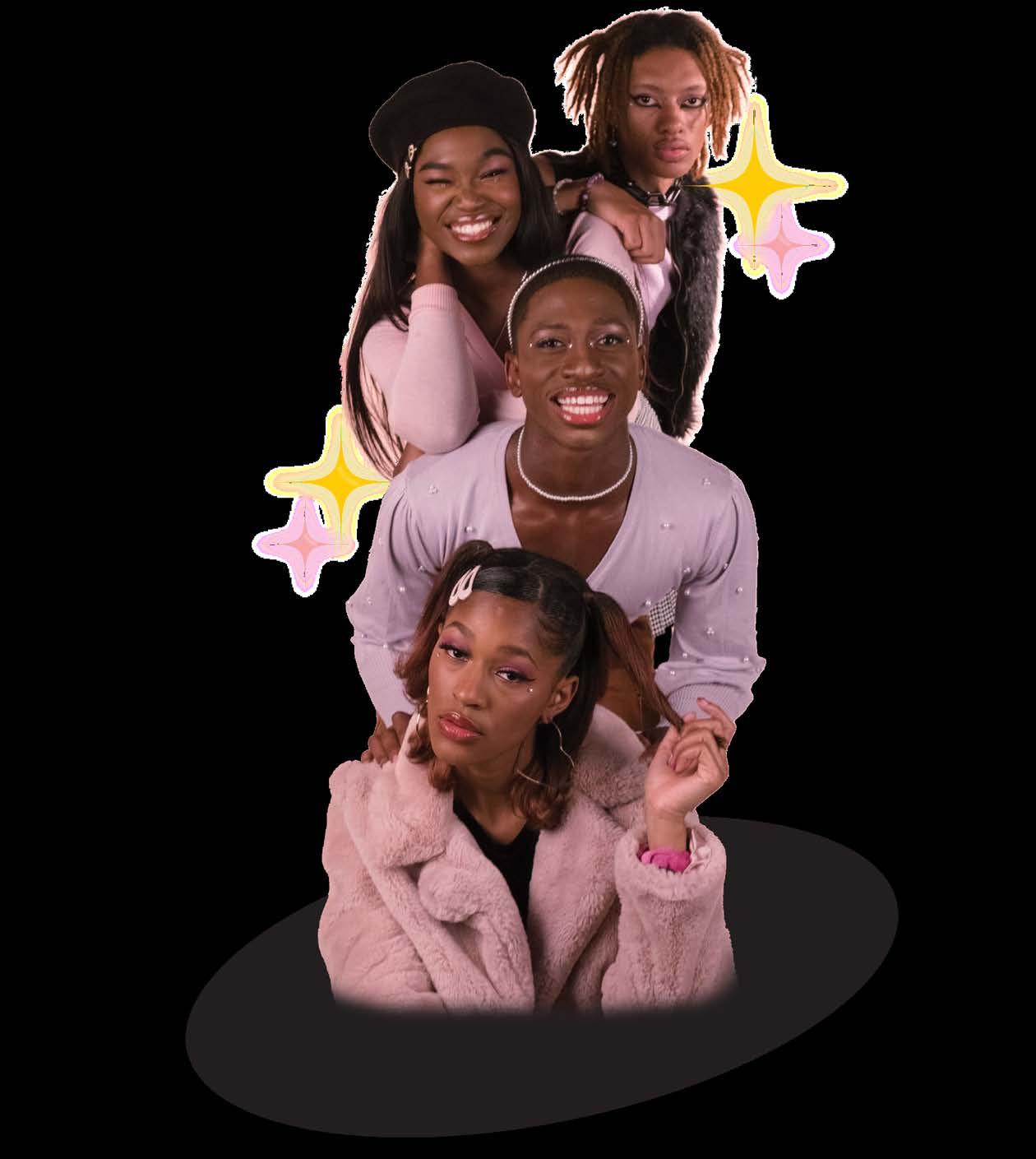


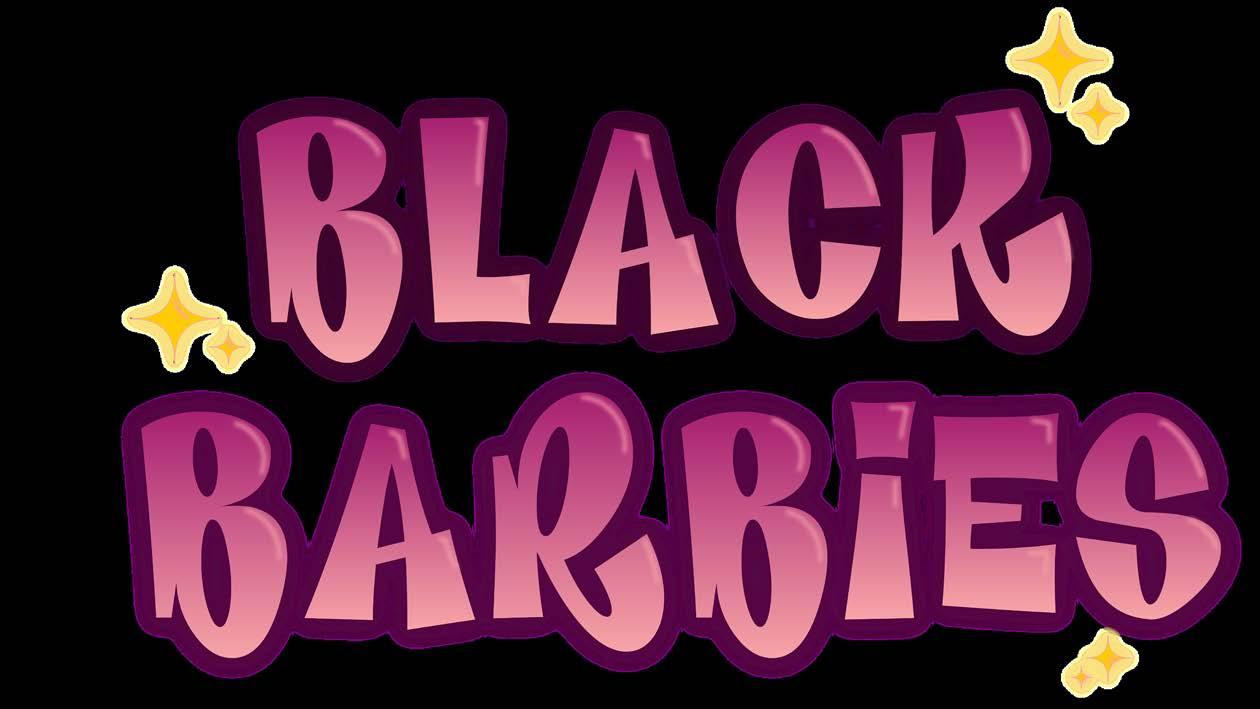
61
MODELED BY KYNDAL ADAMS, KENDRA WILCHER, JOSEPH OROCK, ROBERT ROBINSON III
The purple-cropped, fitted top and black fur vest fit perfect into the Bratz vibe. The fishnet stocking, black cargo shorts and Black platform boots were Roberts, and they went with the look perfectly.
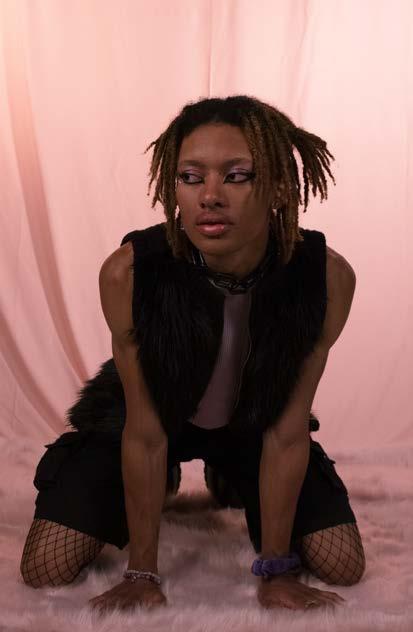

The overall idea of this style shoot was to highlight the idea of Black Barbies and Bratz. Growing up there was always limited access to dolls and Barbies that had darker skin. The typical blonde hair and blue-eyed Barbie was the one everyone always got because they thought that was seen as the prettier one. Consequently, that was the doll that would get advertised to little girls the most. Black Barbies were never seen on shirts, in Barbie movies or even advertised on TV. This neglect causes little girls who have darker complexions to feel left out and think that they are not pretty when in reality the lack of representation from early on causes such ideas to get created in little girls’ heads. With this shoot, I wanted to dismiss this idea of the “perfect
Barbie” having blonde hair and blue eyes and focus on the importance of having the correct representation and showing that Black Barbie is just as beautiful. Along with the lack of darker complexion Barbies there is a big lack of representation in male Barbie Dolls and, on top of that, darker, male Barbie dolls. Each model is seen wearing different aesthetics highlighting the concepts of different Barbie Dolls. Each one has its own vibe replicating the overall concept and ideas that Barbies and Bratz have. This shoot was made to bring light onto the idea of Black Barbies and Bratz and embrace the beauty of being Black.


62
Joseph wore a pearl-embellished lilac cardigan, brown cargo pants, black boots, a black belt and a pearl headband. I wanted to create a light and radiant look with Joseph’s outfit.
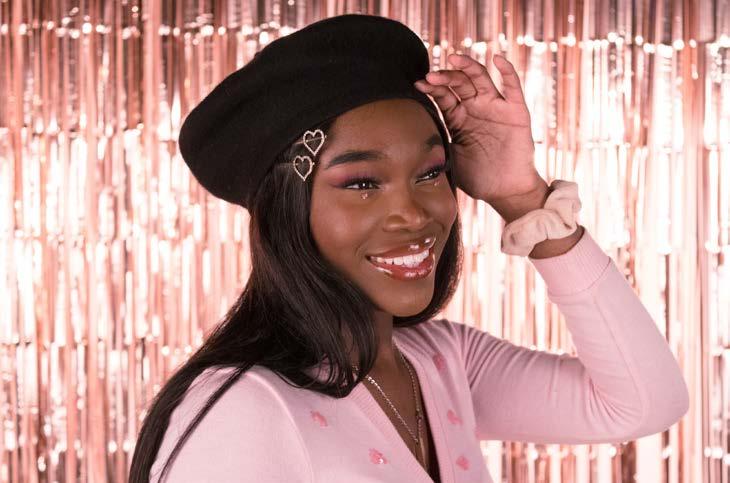
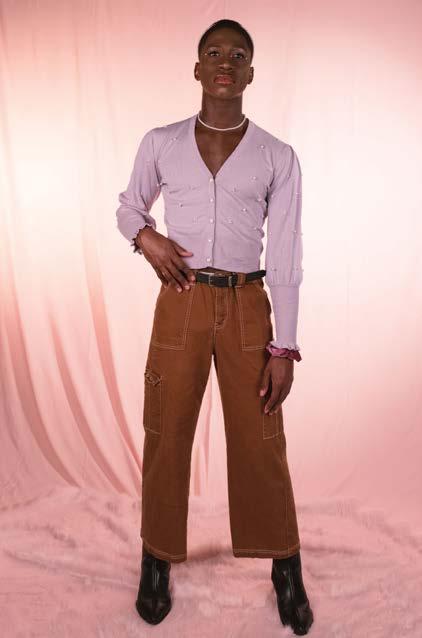

63
Kendra is seen wearing a black and white gingham pleated skirt, a pink hearts top, black platform baby doll shoes, white ruffle socks, a black beret and heart clips that brought the look together. The overall vibe I wanted for this look was a softer more feminine and girly aesthetic.
The overall vibe for this look was the classic, baddie Bratz. The black velvet crop top, zebra pants and pink fur jacket pulled the look together and created that Bratz vibe. The black platform shoes, pink clips and heart earrings added to the look as well





64


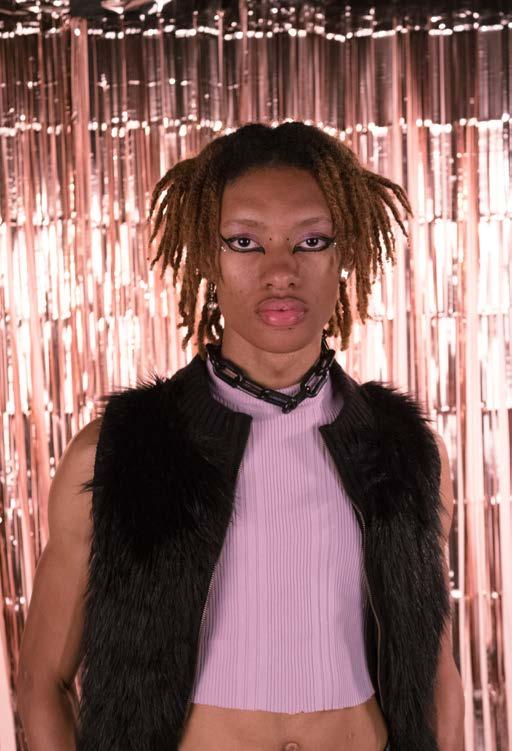


65
THE HISTORY OF GLOVES

66
WRITTEN AND STYLED BY MIA McMANUS • PHOTOS BY HENRY TRAVIS • DESIGN BY SHAIRA NIXON MODELED BY SARAH CHEELY AND ALEXA SCHUAM
THE MOST ELEGANT ACCESSORY?
Easily, gloves. What do you think of when you hear the word? Maybe you come from a colder climate and reminisce on the brutal winter a few years back. Maybe you are a true crime junkie and think of the OJ Simpson case – “if it doesn’t fit, you must acquit.” Maybe you are a fashion fanatic, like me, and think of Prada or Saint Laurent’s previous runways collections.
Princess Diana, Marilyn Monroe and Audrey Hepburn are some of the most elegant and iconic women in history. With some of these iconic moments featuring elegant gloves.
Despite which moment comes to mind first, my point is that gloves are a significant staple in the history of fashion. With records tracing back to the 10th century, gloves were originally worn by cardinals and bishops during the holy sacraments to keep their hands clean. Practical, right? Kings began wearing them, and they came to represent the luxury and prestige these men held over the masses. Gloves made a statement: “I am special.” As time went on, the use of gloves flowed into the closets of the elite. They became a symbol of status and elegance in the 13th century, and they, slowly, trickled down the social ladder.
Gloves have never truly entered the fashion cycle in the way many other accessories have. They were a statement more than a trend, however, that’s beginning to change. They have been seen on the runway and the big screen, but we have never seen them on the street until now. Celebrities like Kim Kardashian and Sydney Sweeney have sported them on the red carpet and Instagram. From Paris to London to Milan, gloves filled the runways of the most recent fashion weeks. Trust me, gloves are the accessory to watch out for this year.
No matter what or who you think of, everyone can agree that gloves have been an iconic symbol for centuries. They, more than any other accessory, have previously had a much deeper meaning. Now, gloves are a fashion-forward accessory available to all who dare to try. And, here at Garnet & Black, we dared.
67
Dress: Meshki /sourced from model Gloves: Amazon /sourced from USC student



68
Dress: Petal & Pup
Gloves: Amazon /sourced from USC student
Earrings: Dillards

Dress: Sourced from USC student
Gloves: Amazon /sourced from USC student

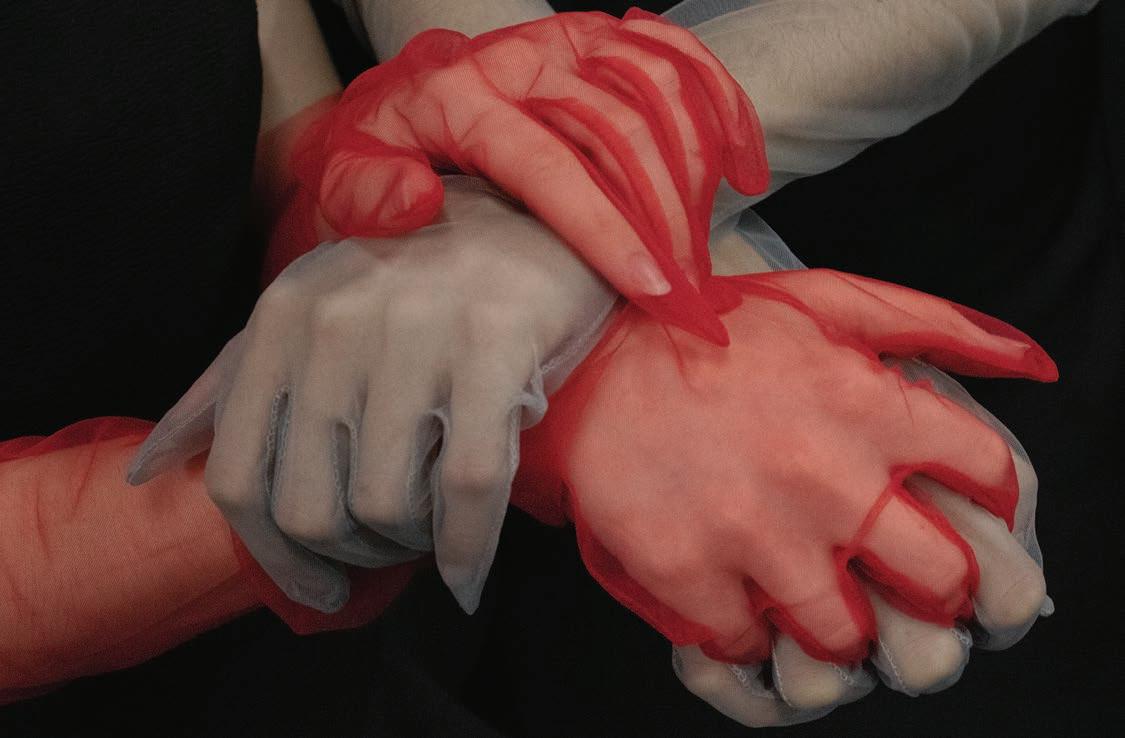
69

70
Dress: Amazon /sourced from USC student
Diana Francis Spencer, also known as Lady Diana, The Princess of Wales or England’s Rose, is one of the most influential style icons in recent history. Although Lady Diana tragically passed away in 1997, she has remained a prominent fashion icon, possibly even more now than when she lived. This can be attributed to the recent semi-factual biopics about her: the award-buzzing movie and show, Spencer and The Crown. Still, I believe Diana has remained a pillar of fashion society not just because her life, and outfits, have been recreated on the screen, but because she possessed a certain “it factor” that does not fade with time. Diana will be remembered in years to come not only for her pure heart, her persistence in the face of brutal public scrutiny and her commitment to being a good mother to her children but also for the iconic, unique and public-outcry-inducing outfits she wore. Below is a list of the top 7 most iconic outfits Princess Diana wore.
The most iconic outfiton thelististhe dress to end all dresses, the Revenge Dress. This term is for the sexy outfit you wear out to show your ex what he’s missing, practically invented by Diana. This dress has its own Wikipedia page. She wore it to a fancy dinner the night that her husband, Charles, Prince of Whales, admitted to adultery on television. This outfit was not to be seen as a big middle finger to her husband, but as a show of strength, class and self-worth after being publicly humiliated. I encourage everyone to find your revenge outfit, whether it includes a sapphire and diamond pearl choker or not is up to you.
The second most iconic outfit Diana wore is, of course, her wedding dress. This dress has become one of the most famous dresses in the world, according to its own antique lace, the iconic dress had a 25-foot bows. The dress will go down in history for the frilly, lacey, pearl-encrusted art piece it
is and the many copycat wedding dresses it inspired in the years after the wedding.
while dancing on stage to Billy Joel’s Uptown Girls comes in third place. This dress is not only iconic for its glimmering fabric


Lady Diana while she surprised Charles by dancing on stage with the Royal Ballet Dancer, Wayne Sleep. While the whole room burst into shocked applause, the spontaneous dance did not please Charles, who found it to be inappropriate. I say, dance on, Di!
The fourth most iconic outfit needs little explanation. The recipe for this outfit never fails, has become a staple in many women’s wardrobes and, of course, was popularized by Diana herself. Brown western-style boots, the perfect denim jeans, a graphic sweatshirt and an oversized blazer on top. Diana stepped out to the Polo Match in 1988 in this casual look that has inspired countless other chic celebs and was recently recreated by Hailey Bieber for Vogue Paris. Diana came to be known for her street style, which often included athletic wear worn with a classy touch such as a plaid blazer or couture sunglasses. This look will never go out of style. Her fifth most iconic look is all about context. Diana wore this pleated khaki shirt, big brown belt and gold-embellished blazer to Wetherby School’s annual sports day. While celebrating field day with her son Harry, there was to be a mother’s foot race. Diana was told she could not compete in the race because she was wearing a skirt and was a royal. Ignoring the orders, Diana competed in the foot race and won! May this look inspire you to defy the odds, even just for spite!
71
this look inspire you to defy the odds, even just for spite!




This outfit might come as a surprise to some: was Princess Diana a Philadelphia Eagles fan? Actually not really, although one of her most iconic outfits includes a bright green Eagles letterman jacket. She befriended a radio host named Jack Edelstein, who discovered that she was charmed by the Eagles logo. Diana thought that the eagle in flight looked graceful. Edelstein sent her this letterman-style jacket with the Eagles logo on it, which she wore a few times and actually wound up on the cover of People magazine. This, of course, inspired people all over Britain to search for the jacket and purchase their own Eagles sports gear. As a fellow woman who is indifferent to sports, picking which teams to support solely based on the logo is a cause dear to my heart.
The final iconic outfit on this list is the famous black sheep sweater that Vogue calls, “campy.” Diana wore this sweater by Warm and Wonderful to a polo match in 1980, and a few more times after that. It was usually paired with classic blue jeans

72
and a peter pan collar poking out for the perfect, dainty touch.









This sweater has been recreated by Rowing Blazers, Lanvin and Zara. Harry Styles has also been seen in a sheep-patterned, sweater vest that reminded many fans of the iconic Diana look. The single black sheep on the sweater, surrounded by identical white sheep, is thought to represent Diana herself. Many fashion critics believe she was referring to herself as the black sheep of the royal family in this outfit. Whether Diana was making a personal statement or simply a fashion statement, this sweater is an iconic and truly one-of-akind piece.

Style Icon: Princess Di
73
Princess Diana has gone down in history as a role model for anyone who doesn’t feel like they belong. She was quietly defiant of an oppressive royal system, making waves in the fashion industry as she went along. Diana wore what she wanted, no matter what her stylists or the royal family advised, and she rose to fashion stardom by doing it. It seems the key to becoming a true fashion icon is the confidence to be yourself, to dress outside the box and to ignore the rules, all of which Diana did so well.
74
75
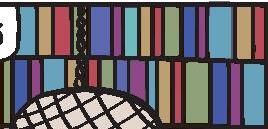




Check out our podcasts!
BY KENDALL VORHIS • DESIGN BY MELISSA BORGERDING
Those That Raised Us
Who is really included in the village that it takes?
BY CLARA BERGESON • DESIGN BY LILY FERGUSON
I was a gift of ‘99 turn of the century becoming another branch of the ever-expanding tree
And there was always someone next door around the corner over the river, through the woods
six grandmas two dads one mom about seven aunts –
And everyone’s got a birthday: cousins of the fourth and fifth variety, aunts of the uncles, sisters of our childhood best friends.
So now I’ve found (above all), I’m a family man; we all are.
my grandma’s best friend’s daughter’s husband and his father’s brother’s kids
all were raised
on game show network, Jimmy Buffet radio, open mic bar stools, best friend’s cool tile floors
a 2005 honda accord that picked me up in 3rd grade raised me
without her we walked home to our best friend’s moms and mom’s best friends
two, three and four fathers and mothers we grew till 11 ... 12 ... 13 ...
so many miss’s mister’s yes ma’am, no ma’am
raised to be polite raised by my tree raised beyond blood raised to go on
so that soon, together, we will raise something else to care for.
77
78
Cooking < Takeout
The Comfort Network
We asked our friends on social media about all things comfort... here’s what they said.
DESIGN BY CECILIA CALLOZZO

Where do students find comfort?
@nathunt12
“writing to figure out what I’m feeling or listening to music while outside”
@max_man_214
“video games like mario galaxy, books, movies”
@zambrano.jacob
“going on runs, long coffee shop conversations, and cuddling with bae”
@a.lexangeles
“in my closest friends and my family :)”
@anna.ottinger
How do students seek discomfort?
@a.leach
“Initiating new friendships!!”
@isabellaparas
“I applied for a peer leader position! I’m an introvert but would love the opportunity”
@abigailmonegan
“Traveling internationally without any adult supervision”
@alizajaneh
“Asked him out first”
@lilyvincola
“I left my bed this morning, does that count?” (Spoiler: it totally does!)
“afternoon naps, cats and dogs, a good cup of coffee”
Call a Friend > Journal
a Book < Watch a Show
Read
Bath > Hot Drink
42% 58% 42% 39% 61%
38%
Hot
58%
62%
Hour Walk < Hour Nap 34% 66%
79
80



 Cover photo by Laura Lucivero
Cover design by Shaira Nixon
Cover photo by Laura Lucivero
Cover design by Shaira Nixon



















 BY KELLY HUGHES • DESIGN BY MARIA DESIMONE
BY KELLY HUGHES • DESIGN BY MARIA DESIMONE










 DESIGN BY JENSEN BERNARD
DESIGN BY JENSEN BERNARD




























 BY LILY VINCOLA • DESIGN BY MEGAN WOOTERS
BY LILY VINCOLA • DESIGN BY MEGAN WOOTERS























 BY RAEVA BALI • DESIGN BY LILY FERGUSON
BY RAEVA BALI • DESIGN BY LILY FERGUSON














































